Luxembourg - Small but Special

In June 2021 I took the opportunity of borders reopening as the Coronavirus situation improved to visit Luxembourg, one of the last countries in Western Europe that I have not yet had the chance to explore. With less than 1 million people and an area of less than 3000 sq km, it is one of the smallest countries in the world, but at the same time has one of the highest GDP per capita.
Luxembourg features a rich history with many amazing castles dotted around the landscape, and a diverse and multicultural history and presence. Take a look at the photos below to get a glimpse of what I was able to see in 48 hours.

Hohllay Cave
Our first stop was in Berdorf, where you can find a small network of caves created by mining activity.

Man-made
The area was used to create circular millstones until the 19th century, so these are not natural cave structures.
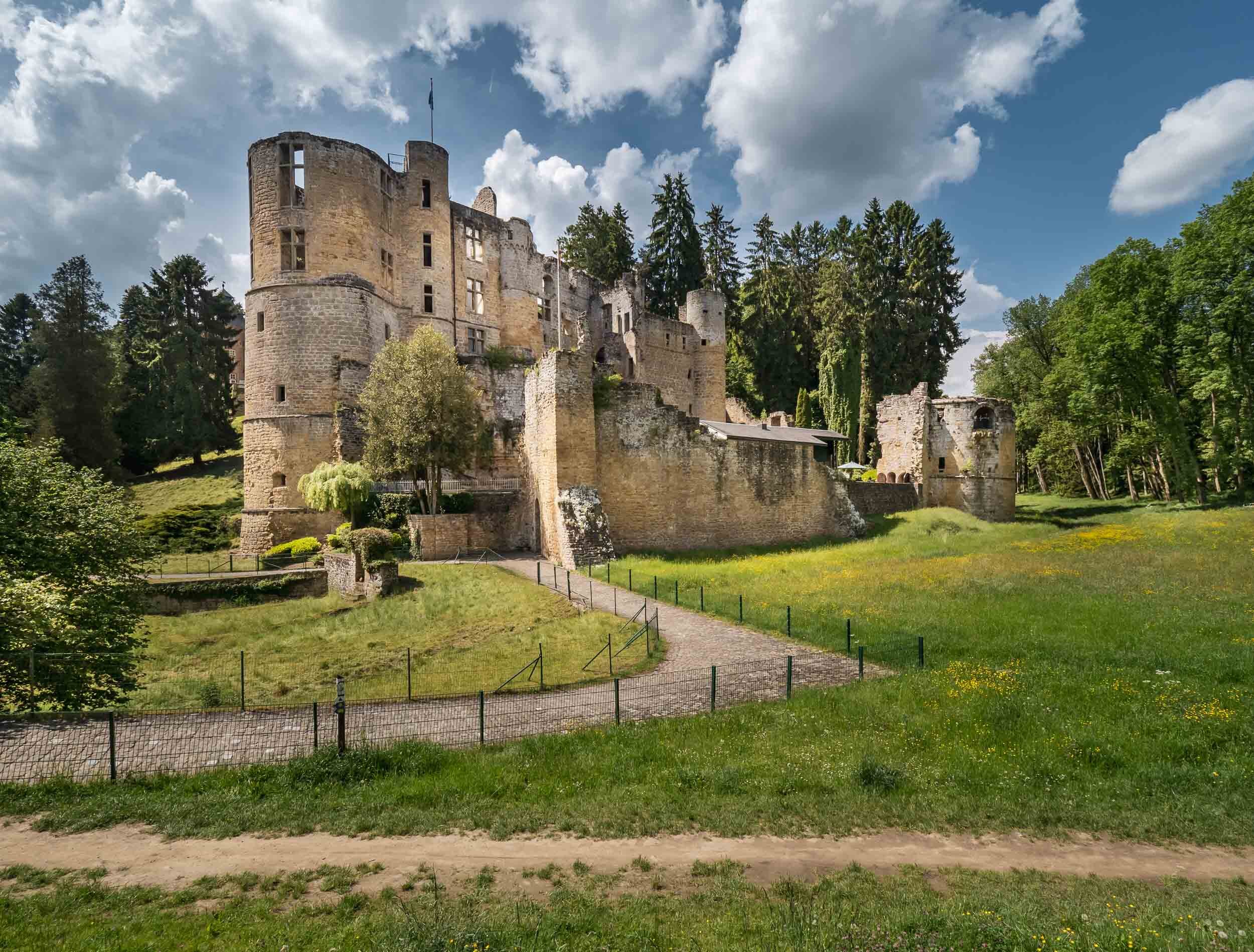
Beaufort Castle
Our second stop was Beaufort Castle, just a short drive away.
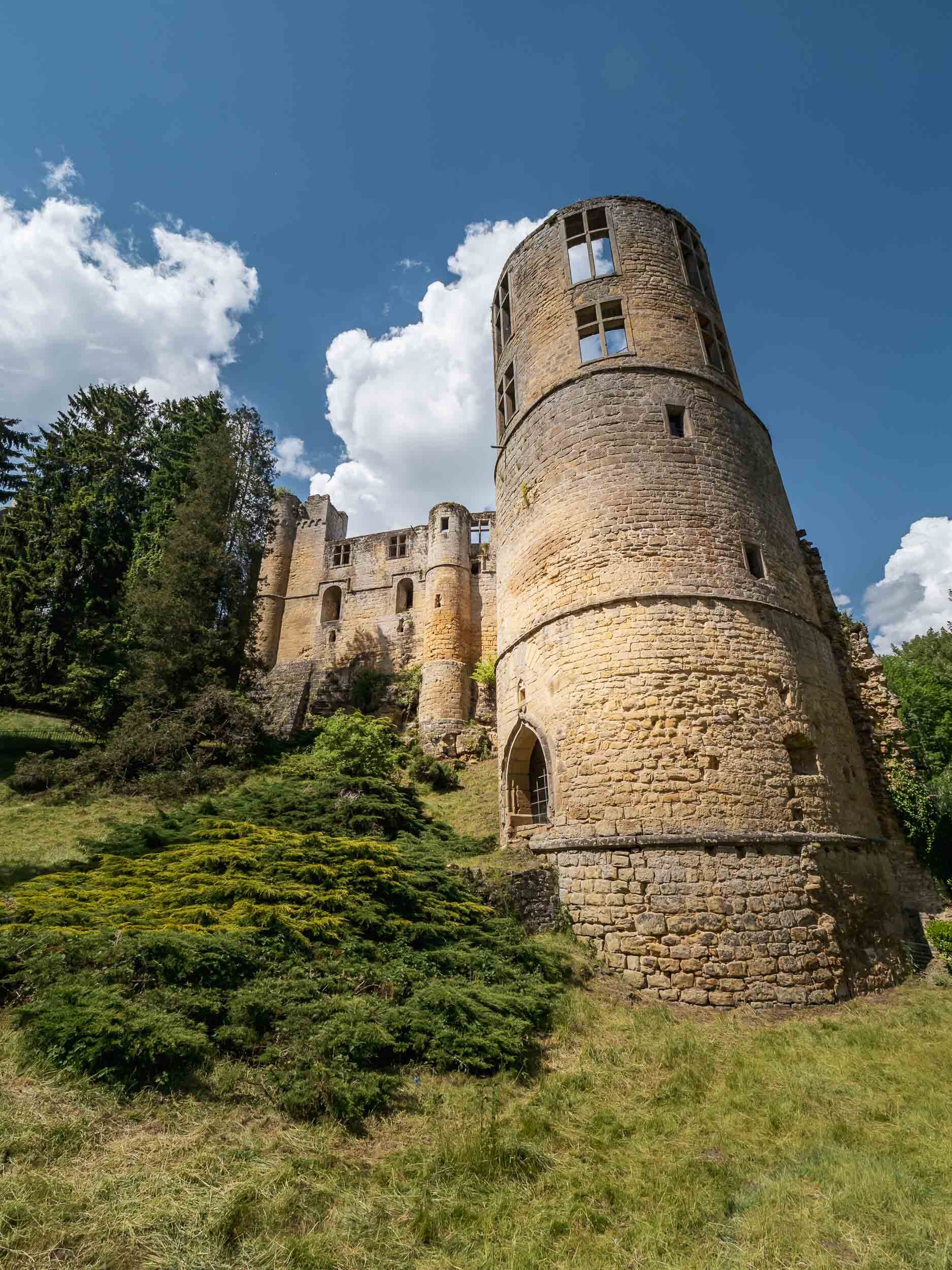
11th Century
First built almost 1000 years ago, since 1988 it has been a Luxembourg national monument.

Trees
It is surrounded by a small river and beautiful forest.

Path
An elevated path leads over the grounds.
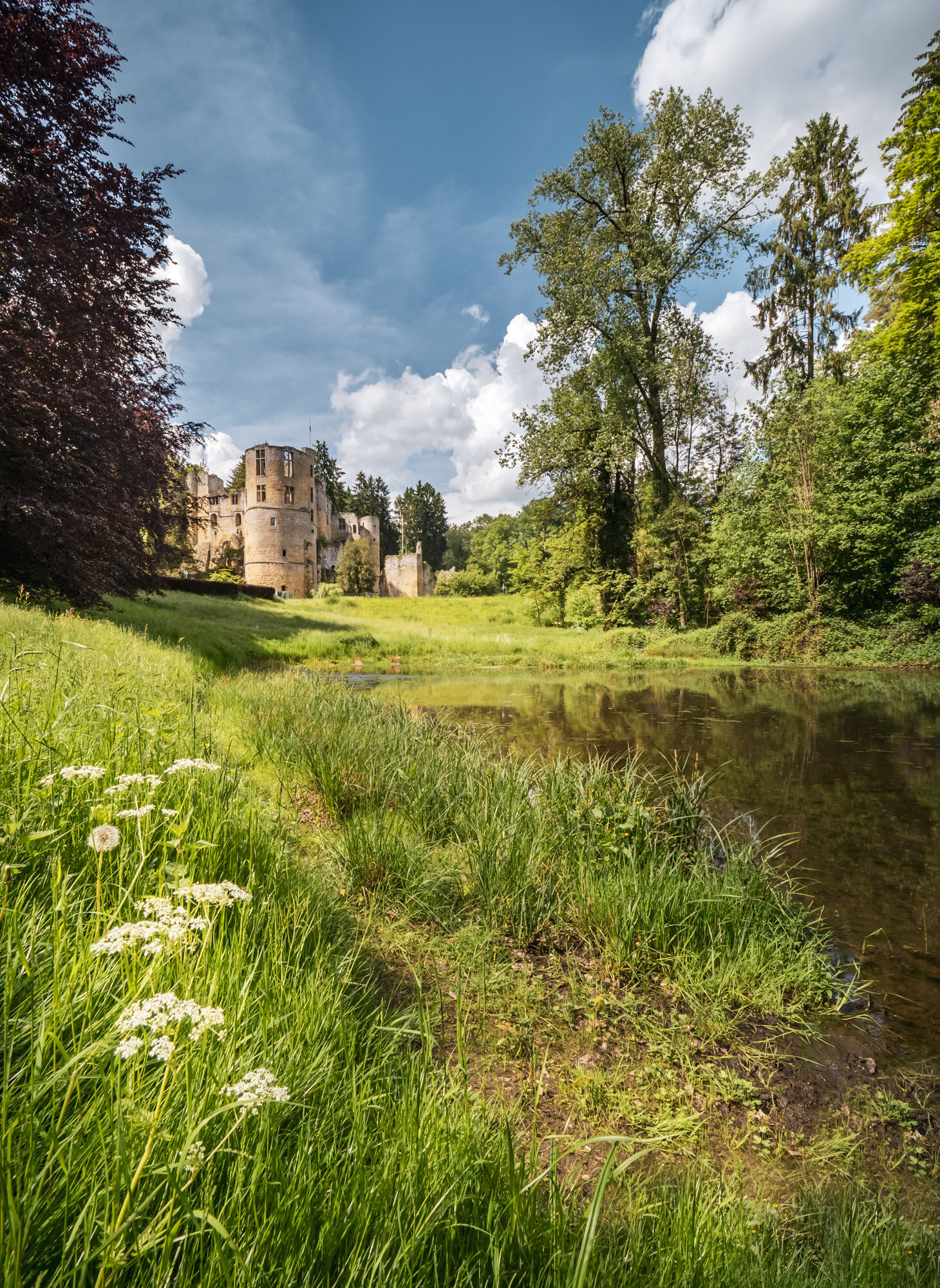
Grounds
A small lake on the southern side makes for beautiful scenery.
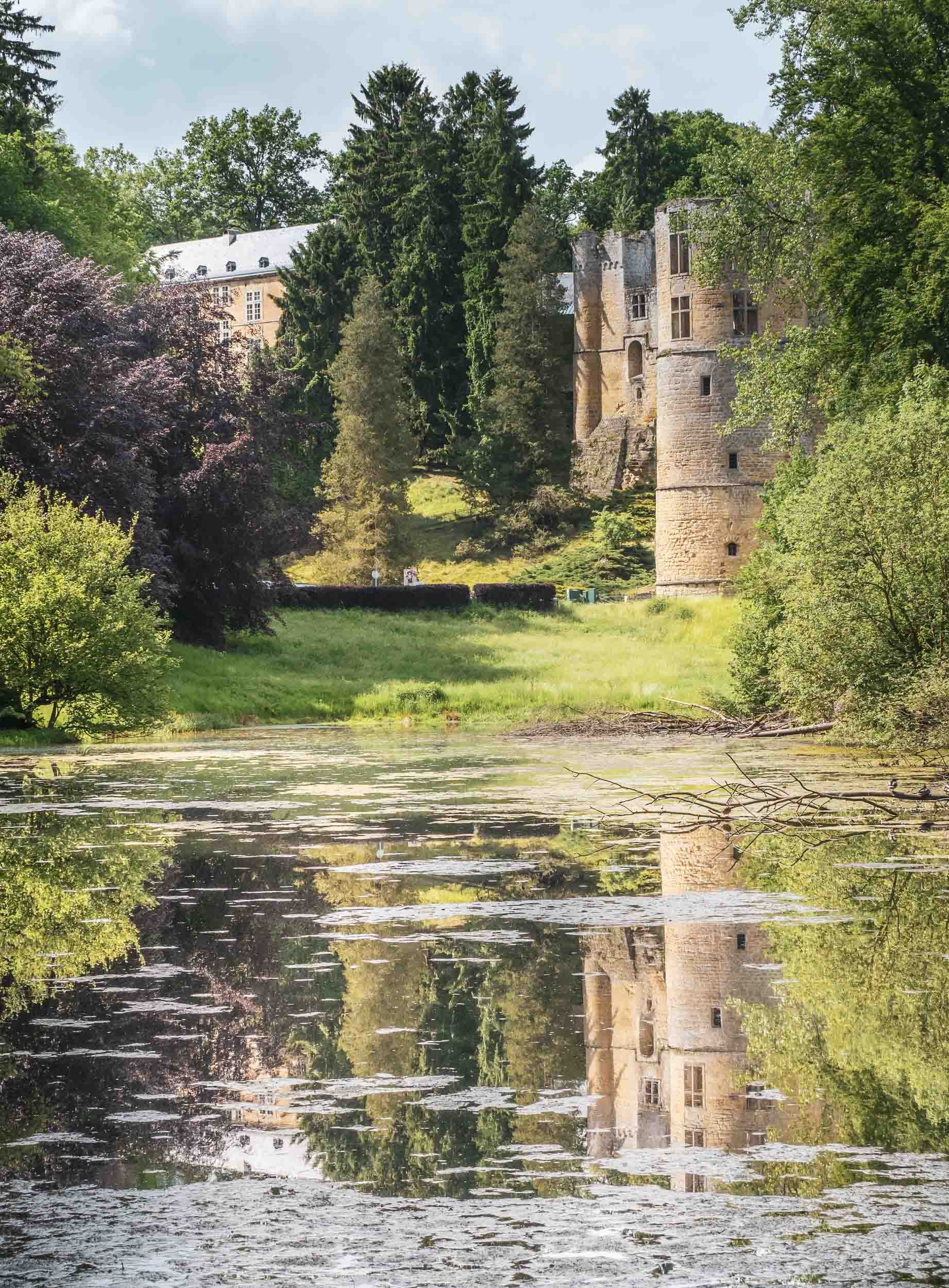
Reflections
Of course, that also means some great reflections.
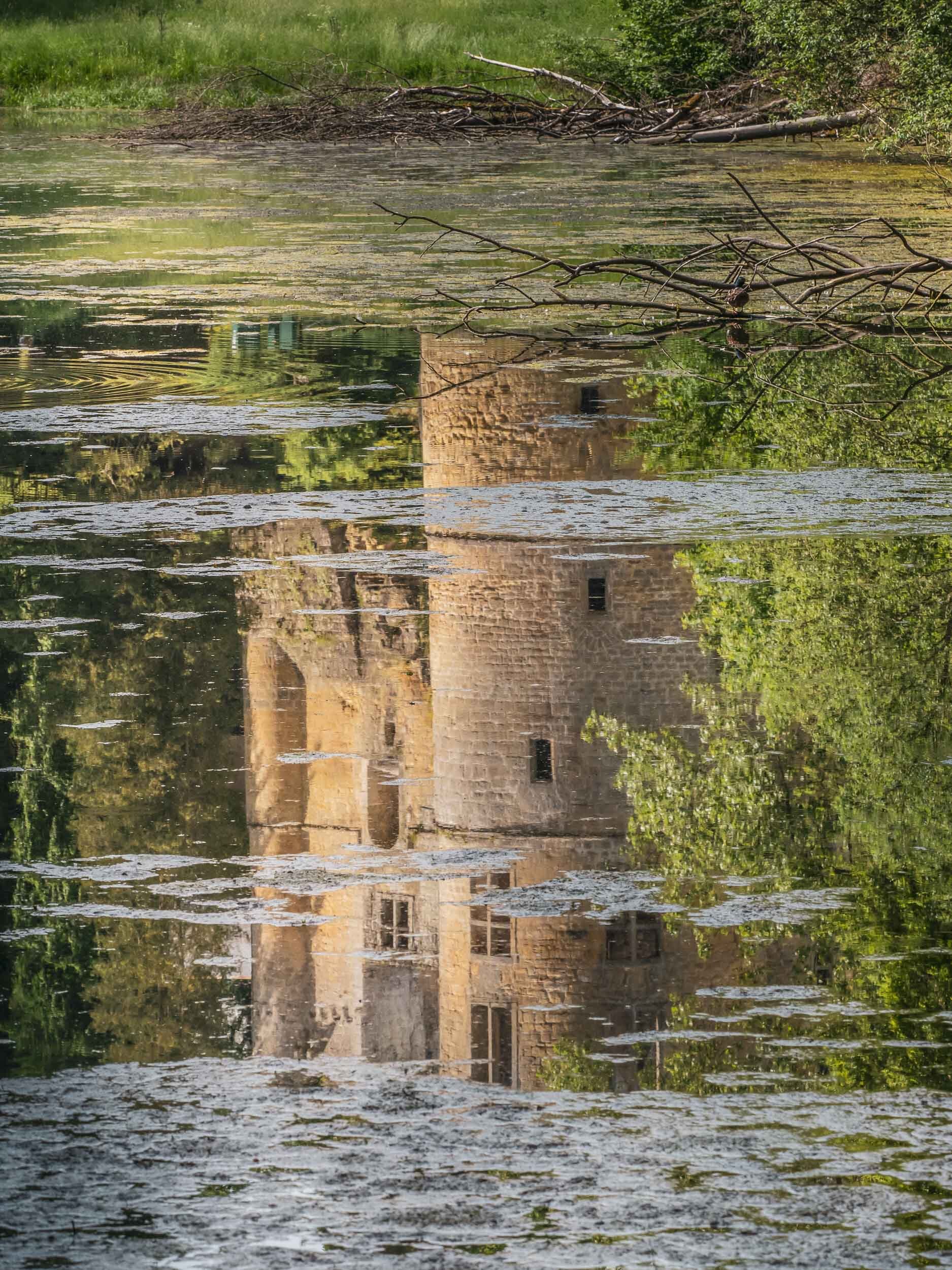
Upside Down
Did I say great reflections?
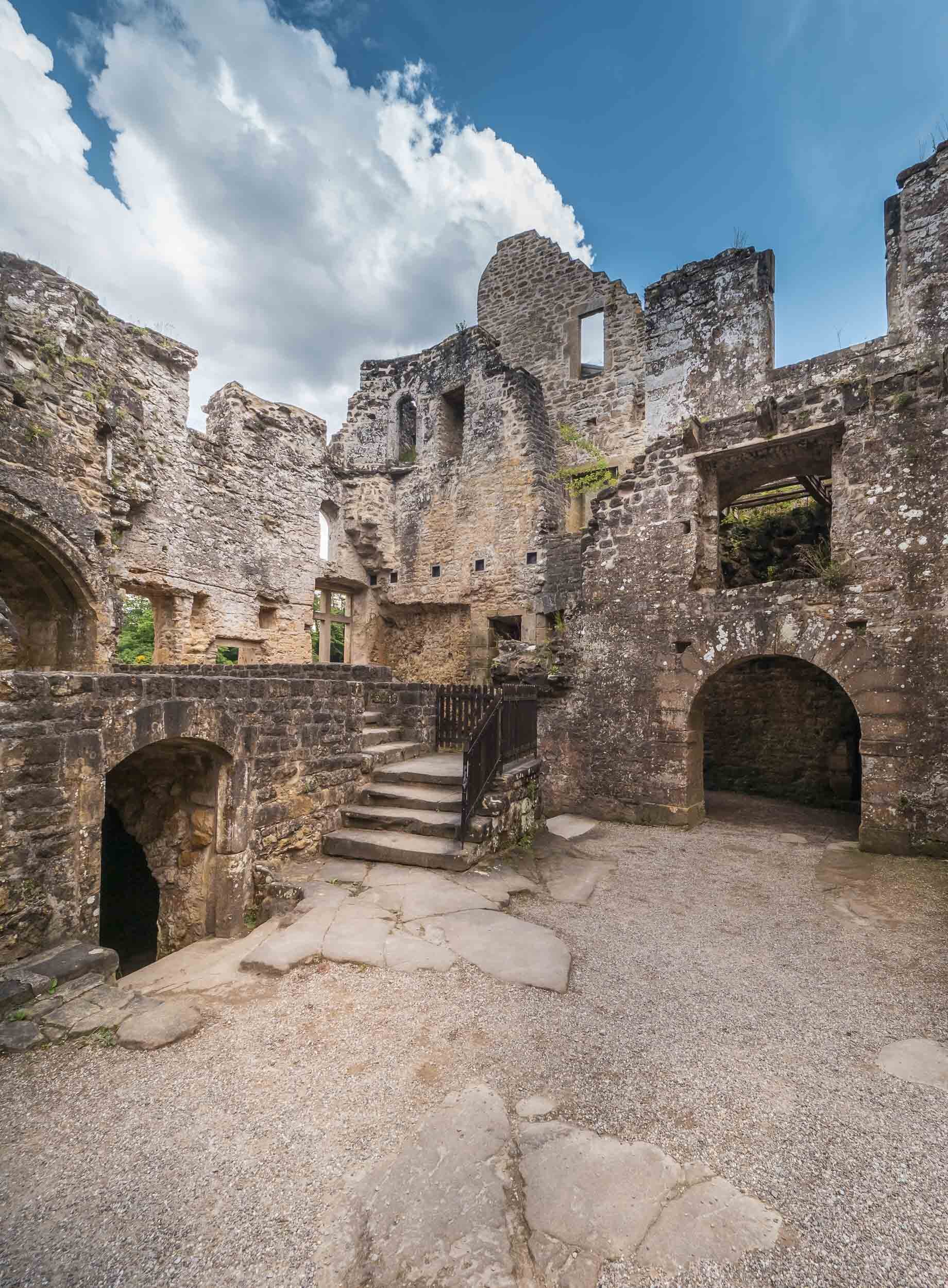
Interior
Most of the castle features medieval architecture, but a few Renaissance style extensions were added in the 1600s.
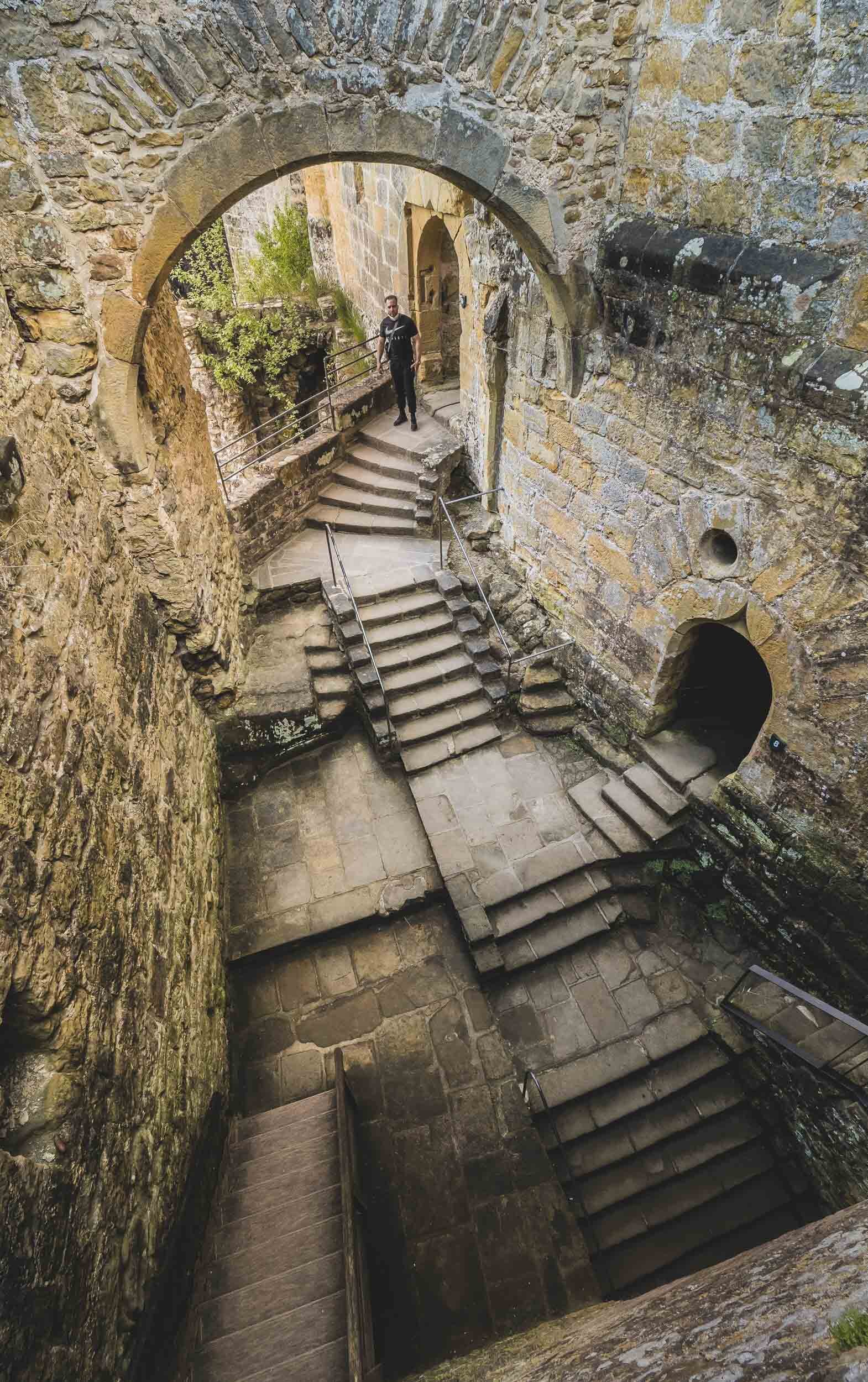
Stairs
The staircases in the central section leading to the different wings.
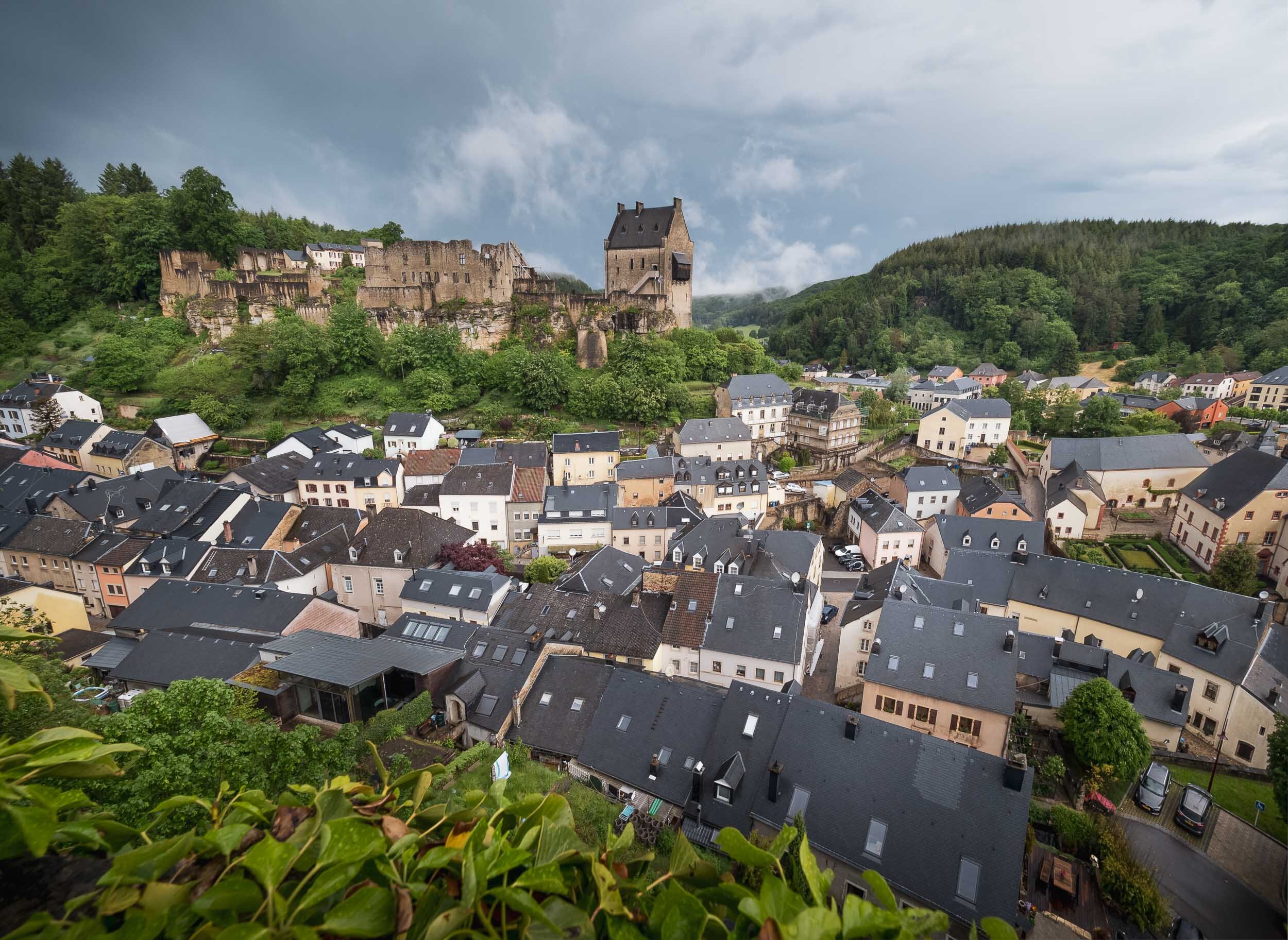
Larochette
The third stop brought us to Larochette, with another beautiful castle perched above the village. Dating from the 11th century, it was destroyed by fire at the end of the 16th century and has been restored and renovated in the 1970s.
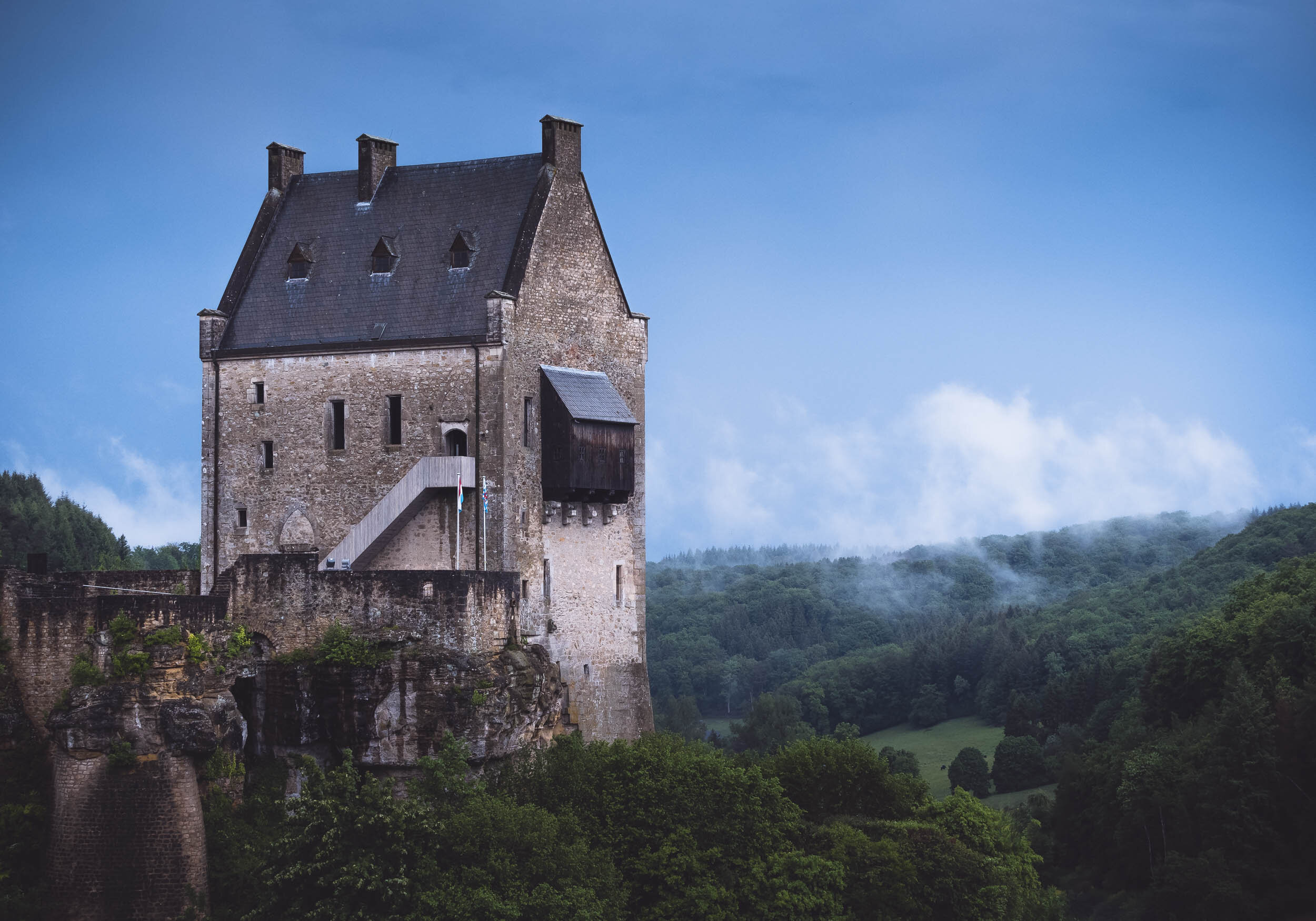
Clouds
After two hours of heavy (and I mean heavy) rain, a few clouds lingered around in the nearby forests as we made our way up to the viewpoint.
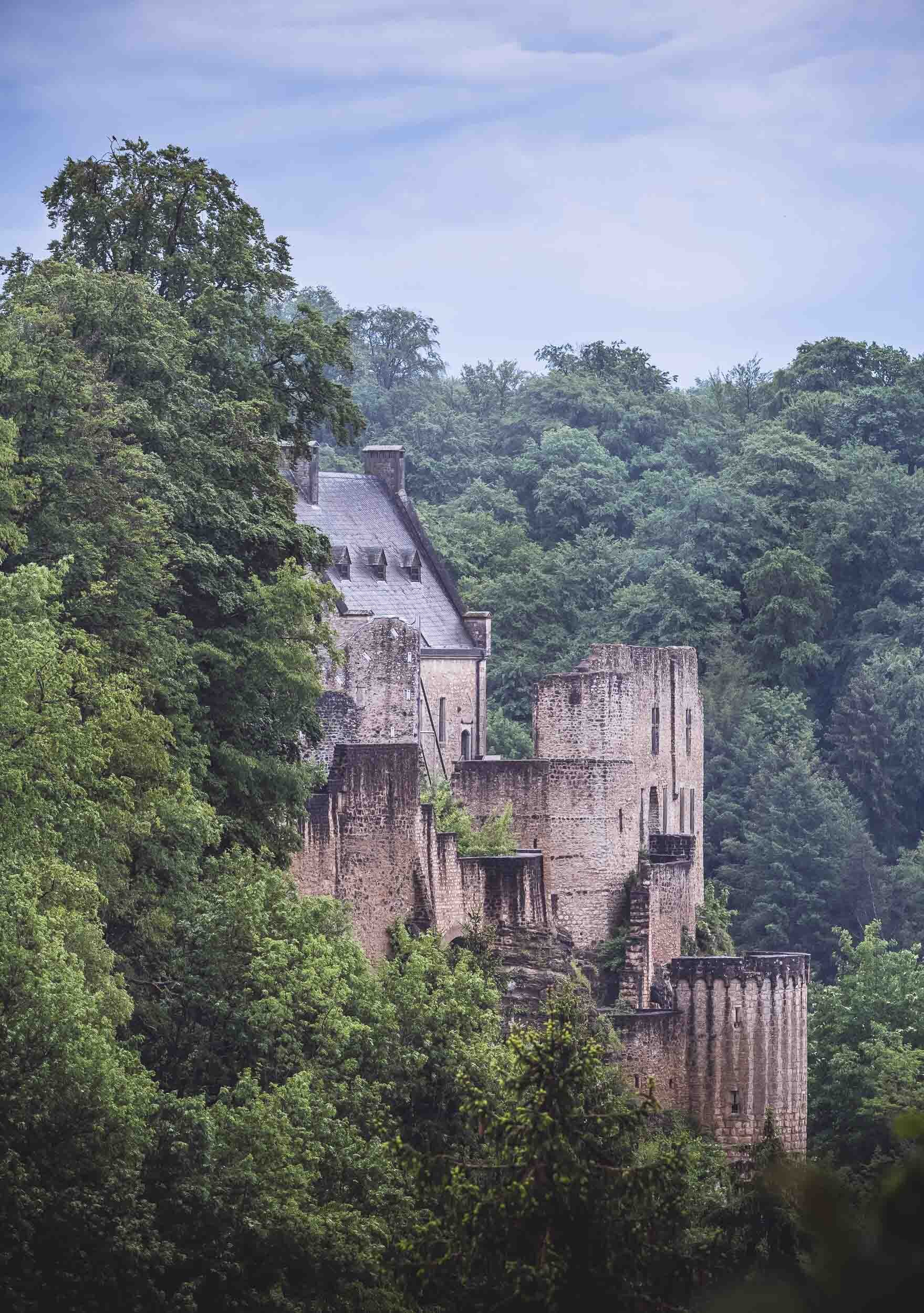
Glimpses
The surrounding hills offer a few glimpses towards the castle structure from different angles.
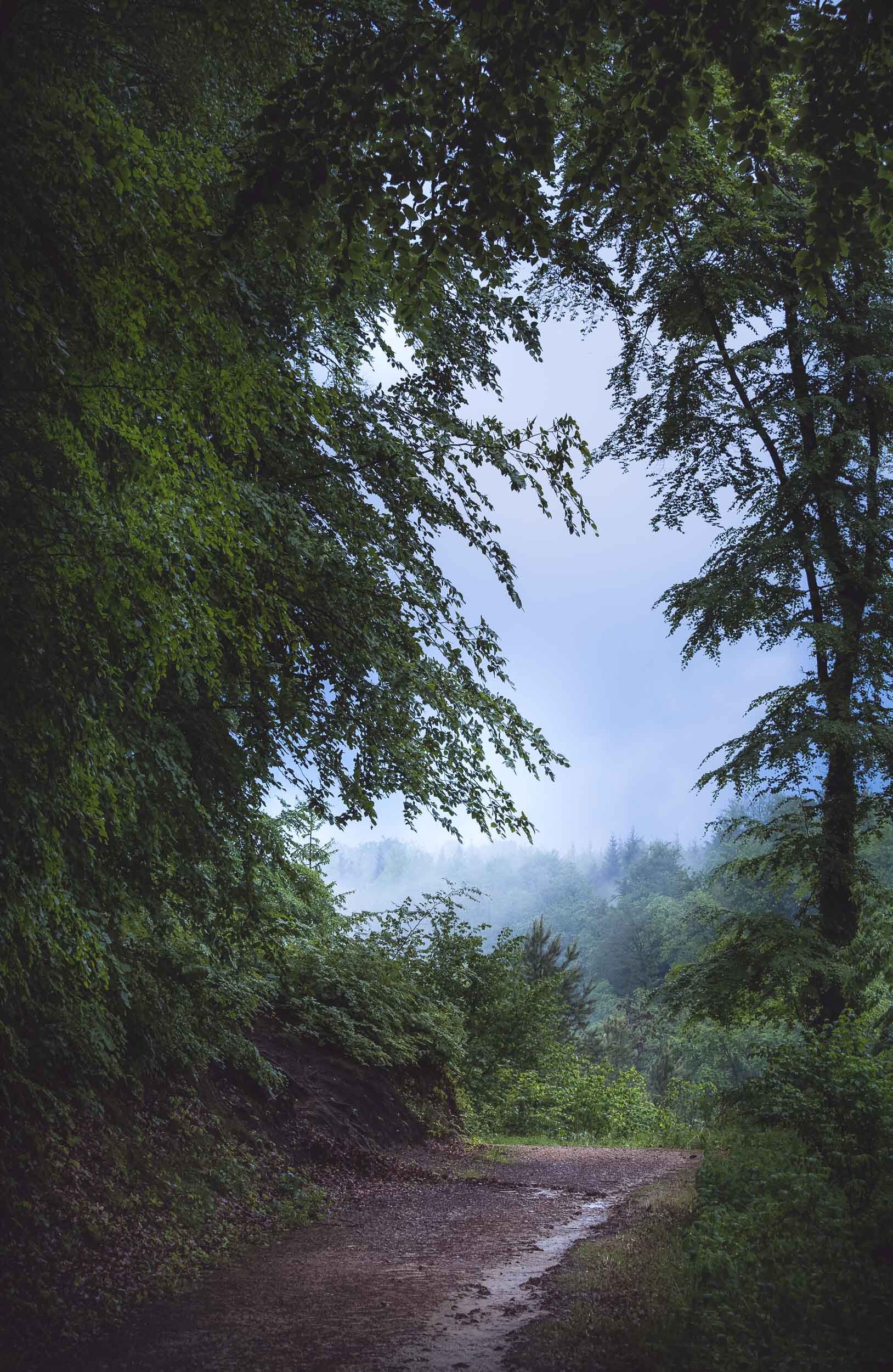
Post Rain
As the heavy rain subsided, the summer greenery of the forest felt twice as intense.

Path
We took them all - in total, we walked for over 40km during the 3 days.
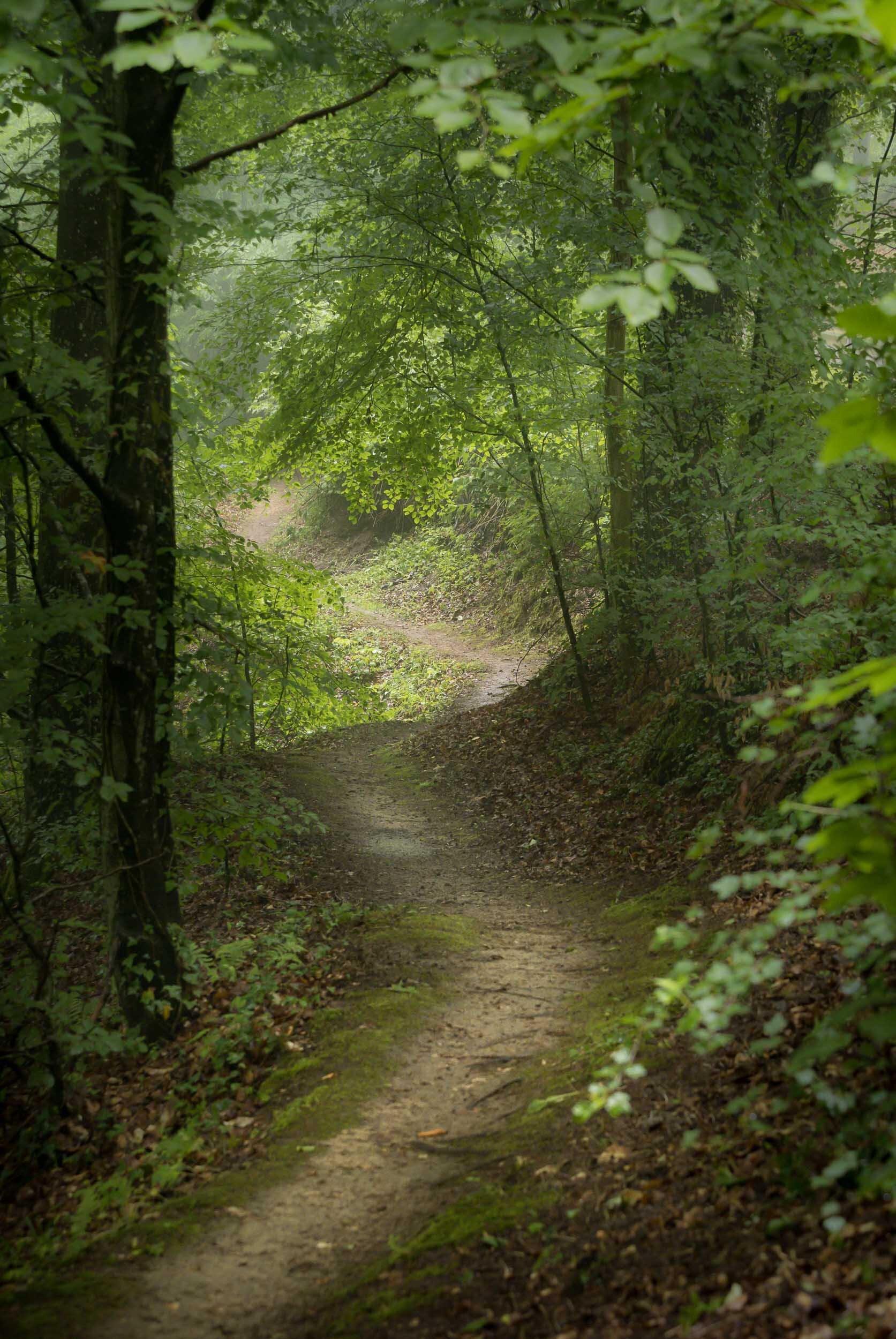
Worth it
Much easier though when the scenery looks like this.

Low Clouds
The post-rain clouds occasionally got stuck in the trees.
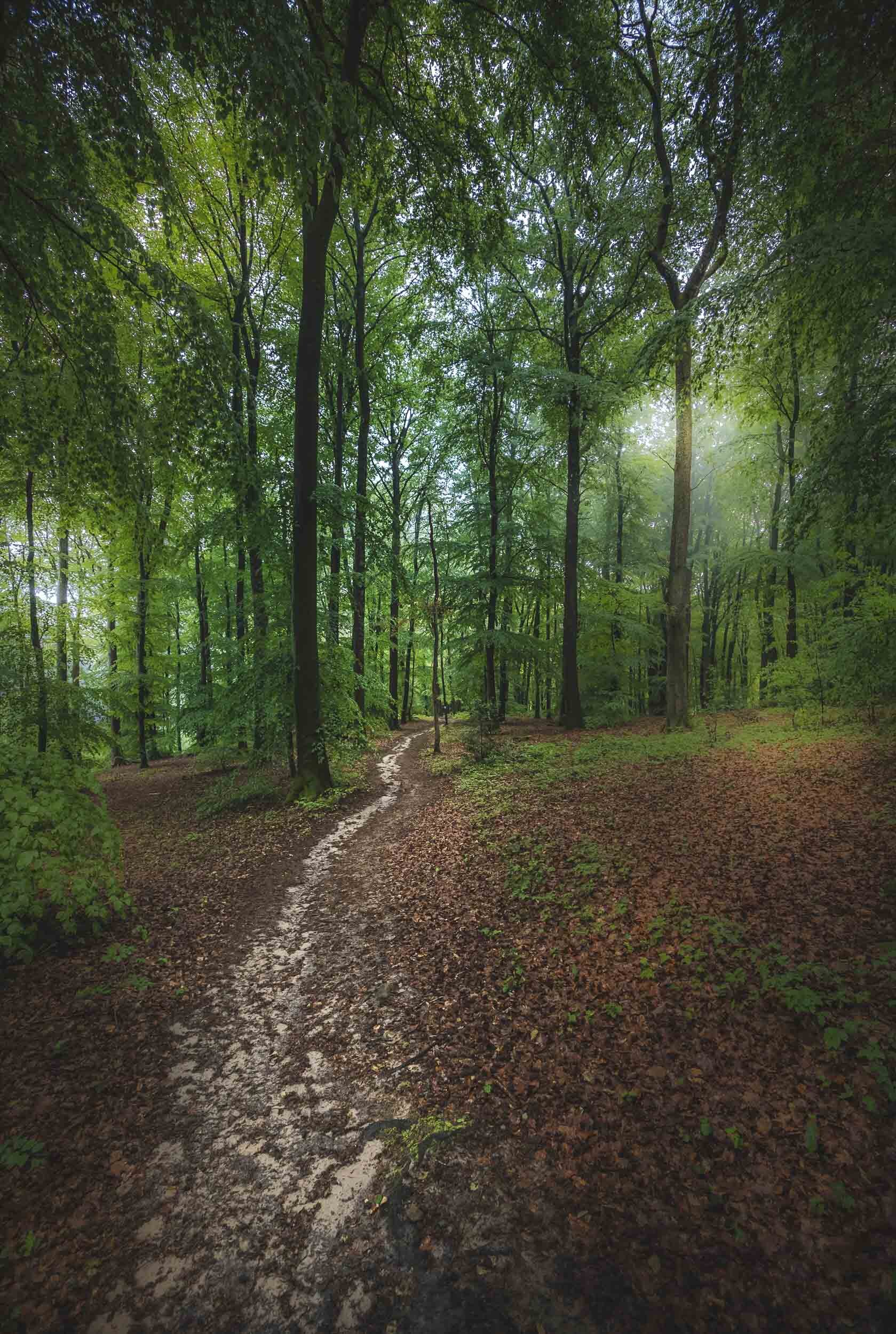
Enchanted
Another path through the forest areas surrounding Larochette.
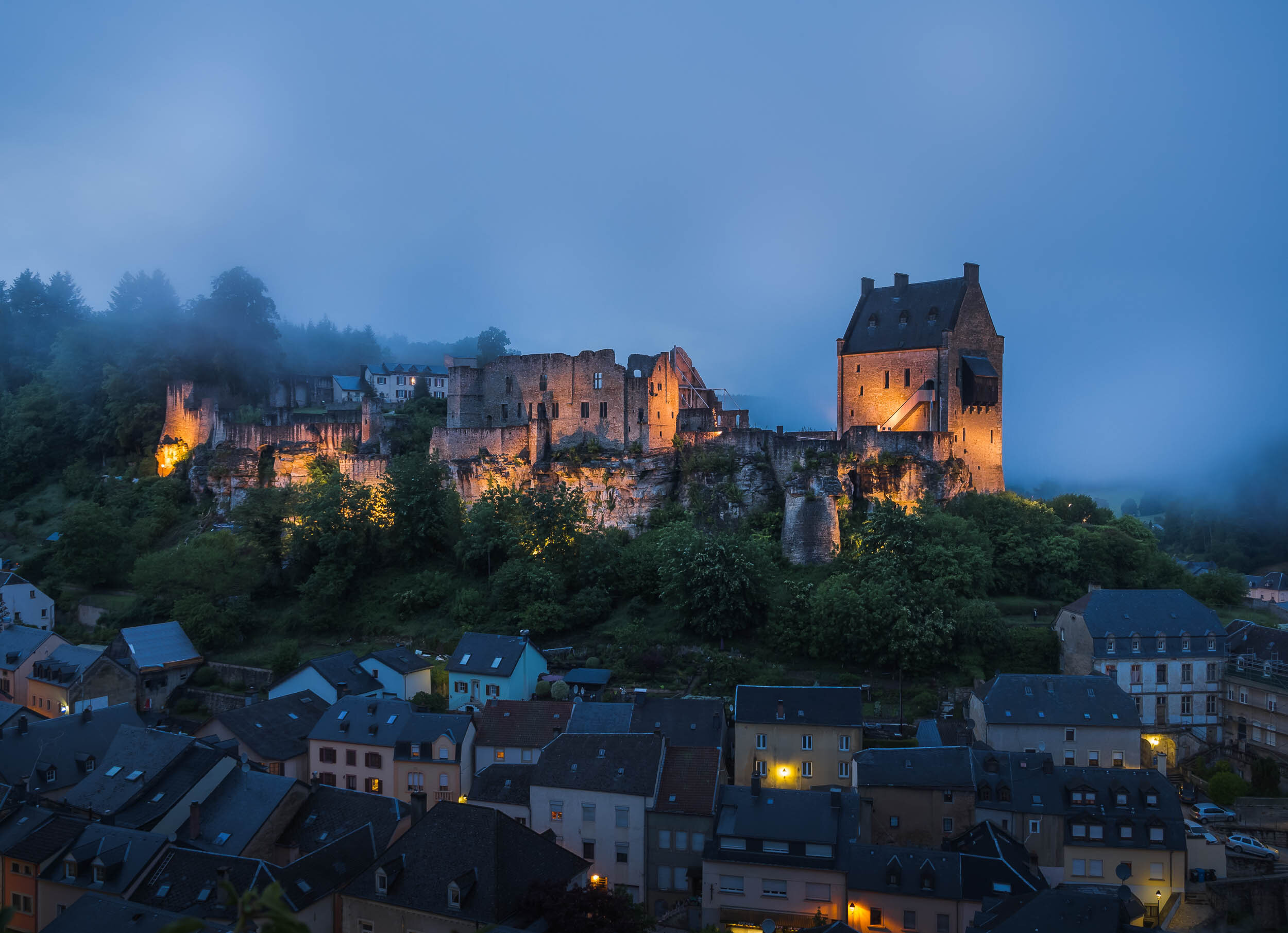
Nightfall
We made our way back to the castle viewpoint just as the lights turned on and the sky darkened.
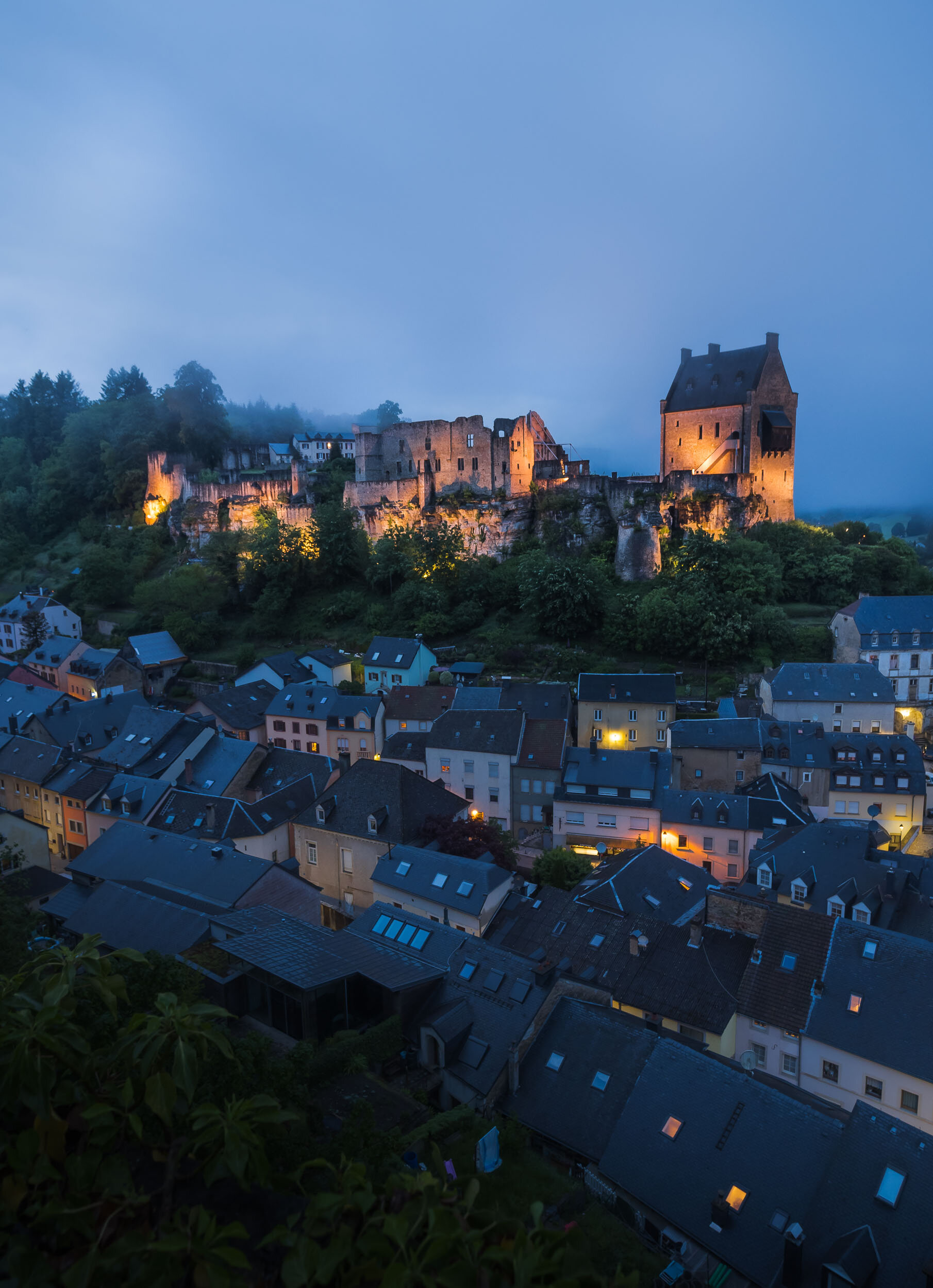
Commitment
To get these shots took some commitment - specifically a barefoot adventure through 5cm deep ice cold rain water.

Panoramic
A full view of Larochette.

Day 2
We spent our second day in Luxembourg city, the capital and home to around 125,000 people.
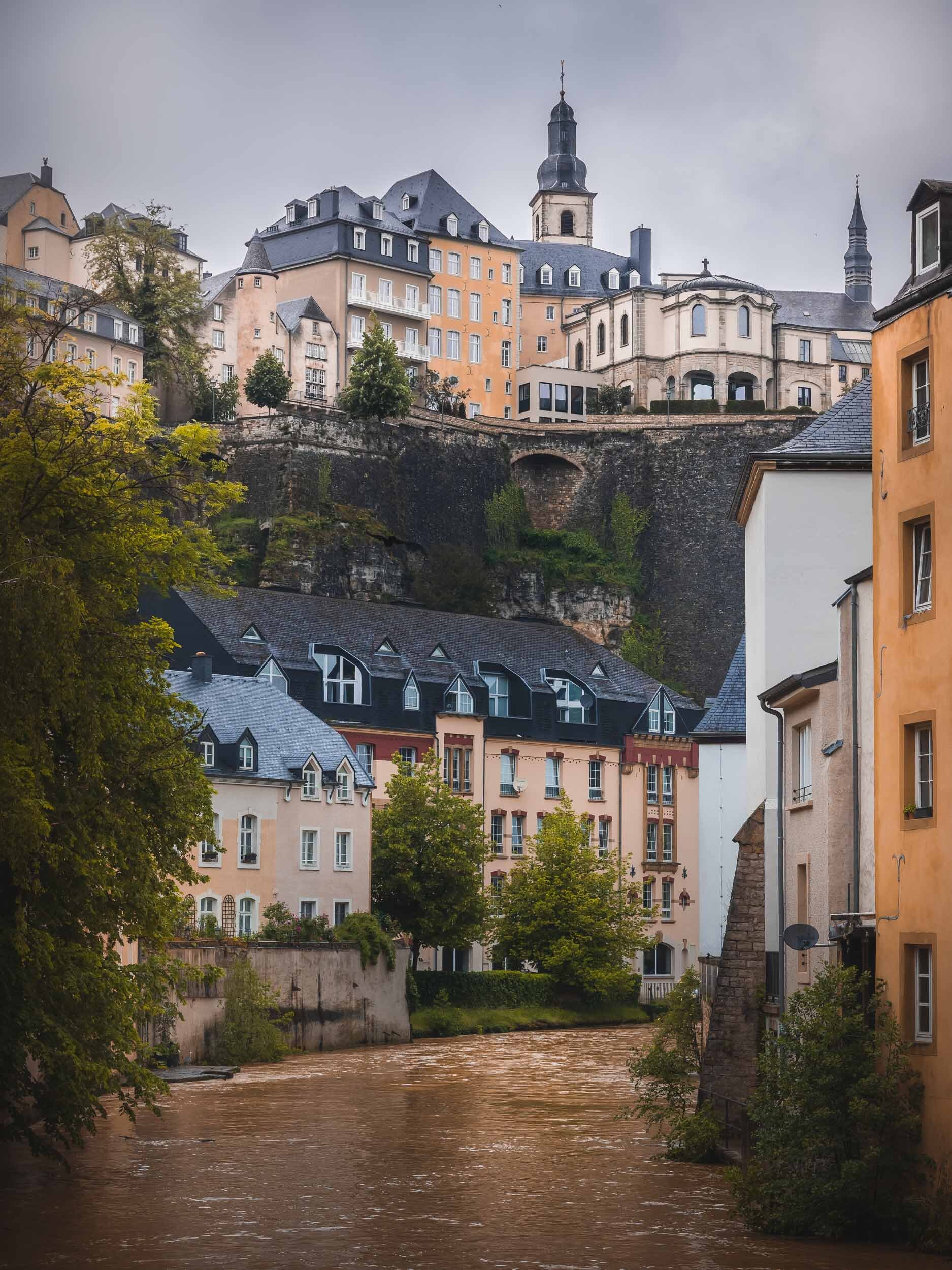
Grund
This district of Grund is quite picturesque - even more so when the Alzette river isn't brown owing to the heavy rainfall I would imagine.
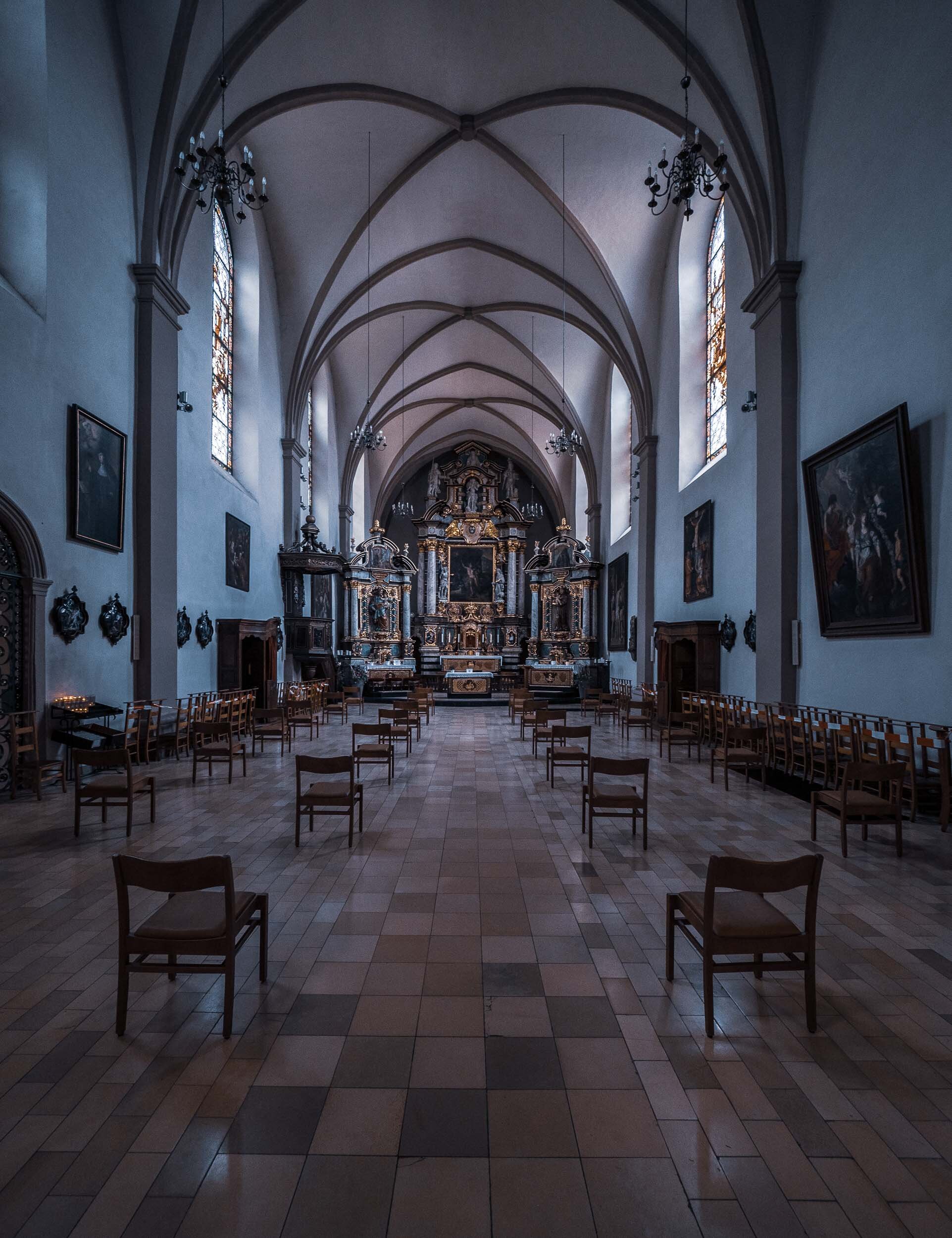
Socially Distanced
Religion during Covid.

International
Luxembourg is made up of almost 50% expatriats, and the city itself has an even higher percentage of non-native inhabitants.

The Look
I couldn't get a good cat shot this time, so this pigeon staring at me shall do the job.
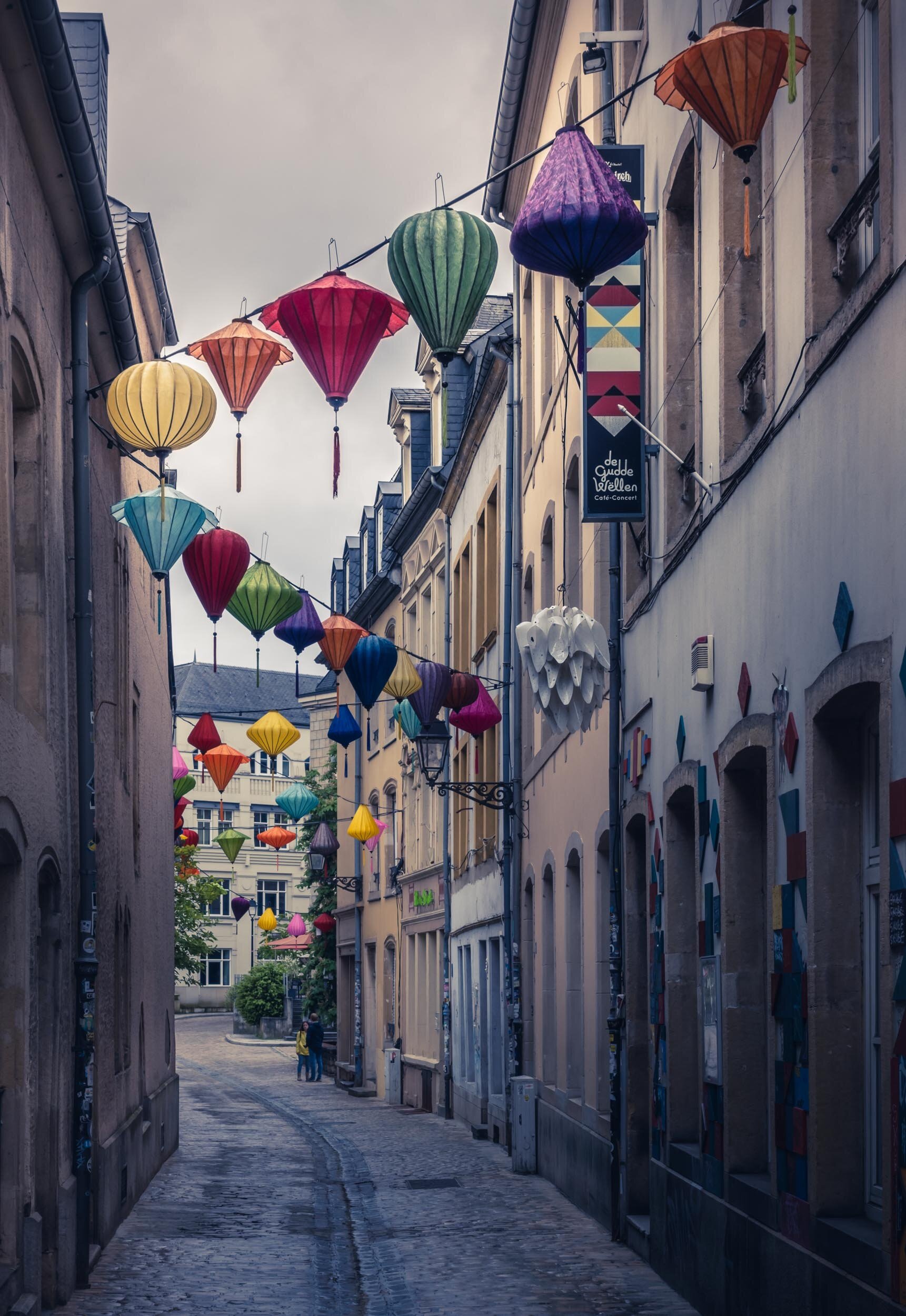
Colours
The first impression of the city was a bit quiet and sterile, but it did lighten up as the day progressed and we explored more.
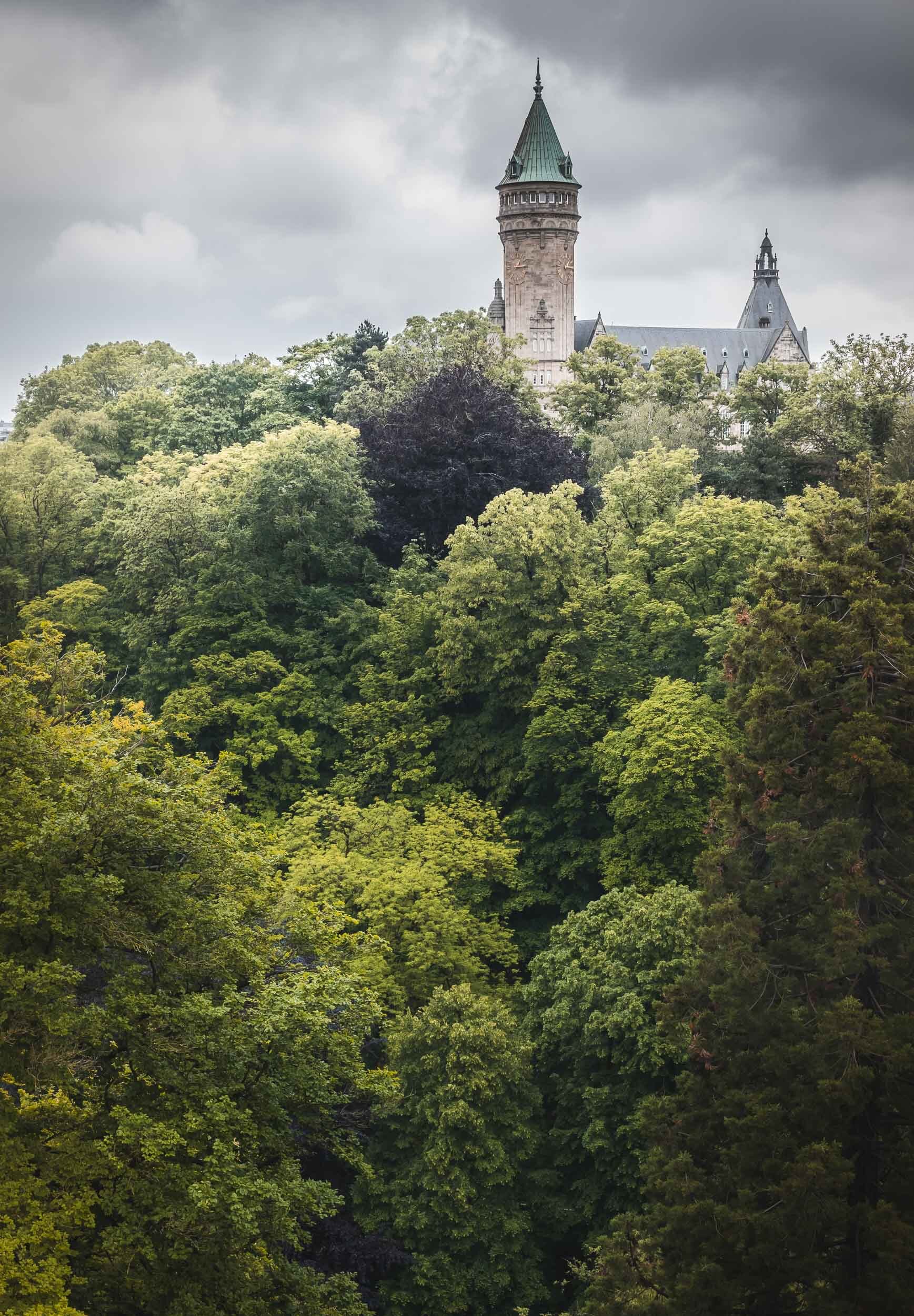
City Greens
The city centre is surrounded by canyons of the Alzette and Pétrusse rivers, filled with large trees, making for some interesting perspectives.
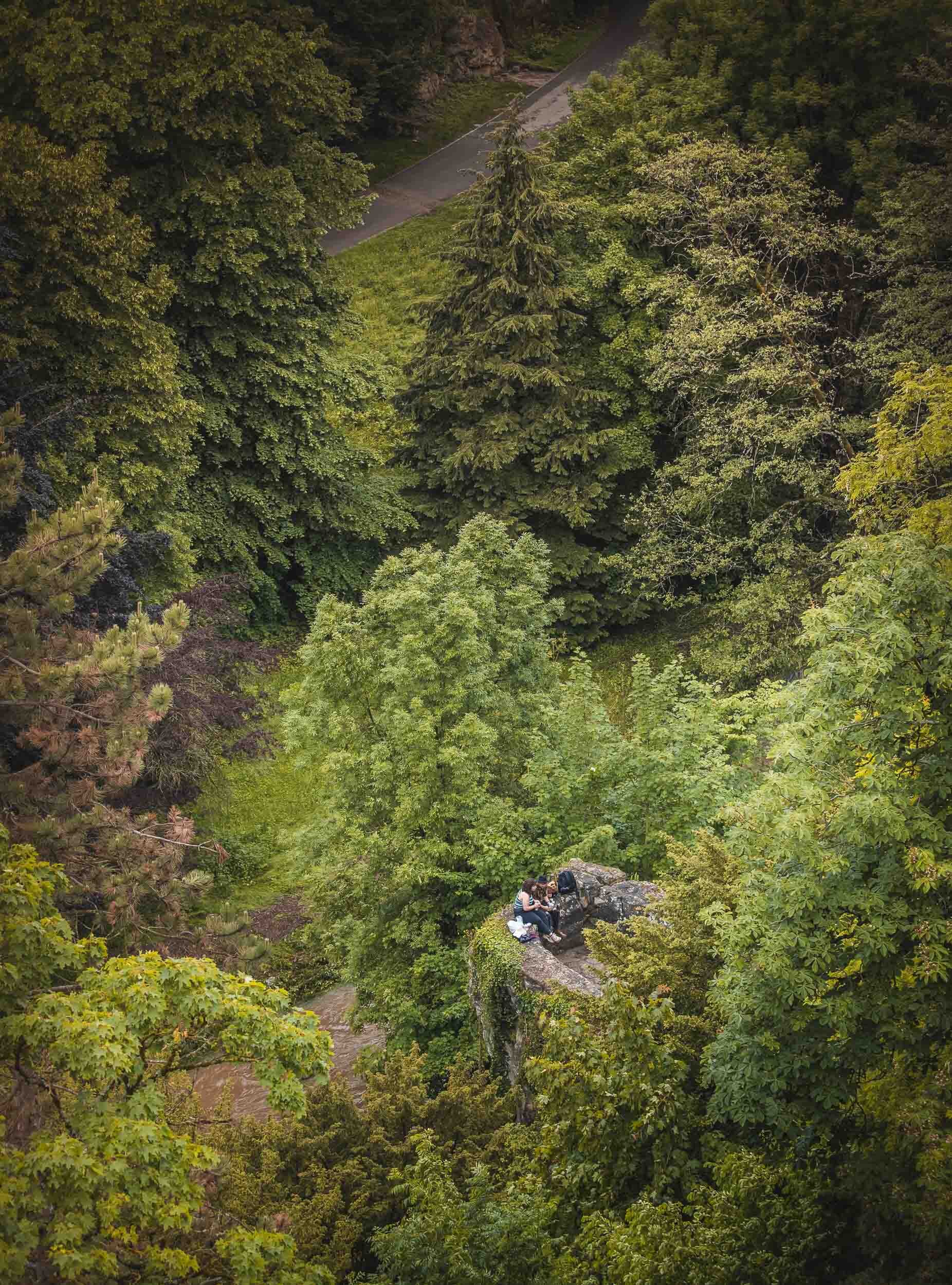
Spots
The canyons are accessible with small parks, bridges and full of small medieval remains.

Adolphe Bridge
This 1900s stone-arch bridge features a hanging walkway underneath, which opened in 2018.

In the Sky
A Cargolux plane - Luxembourg Airport's runway is in direct path of the city.
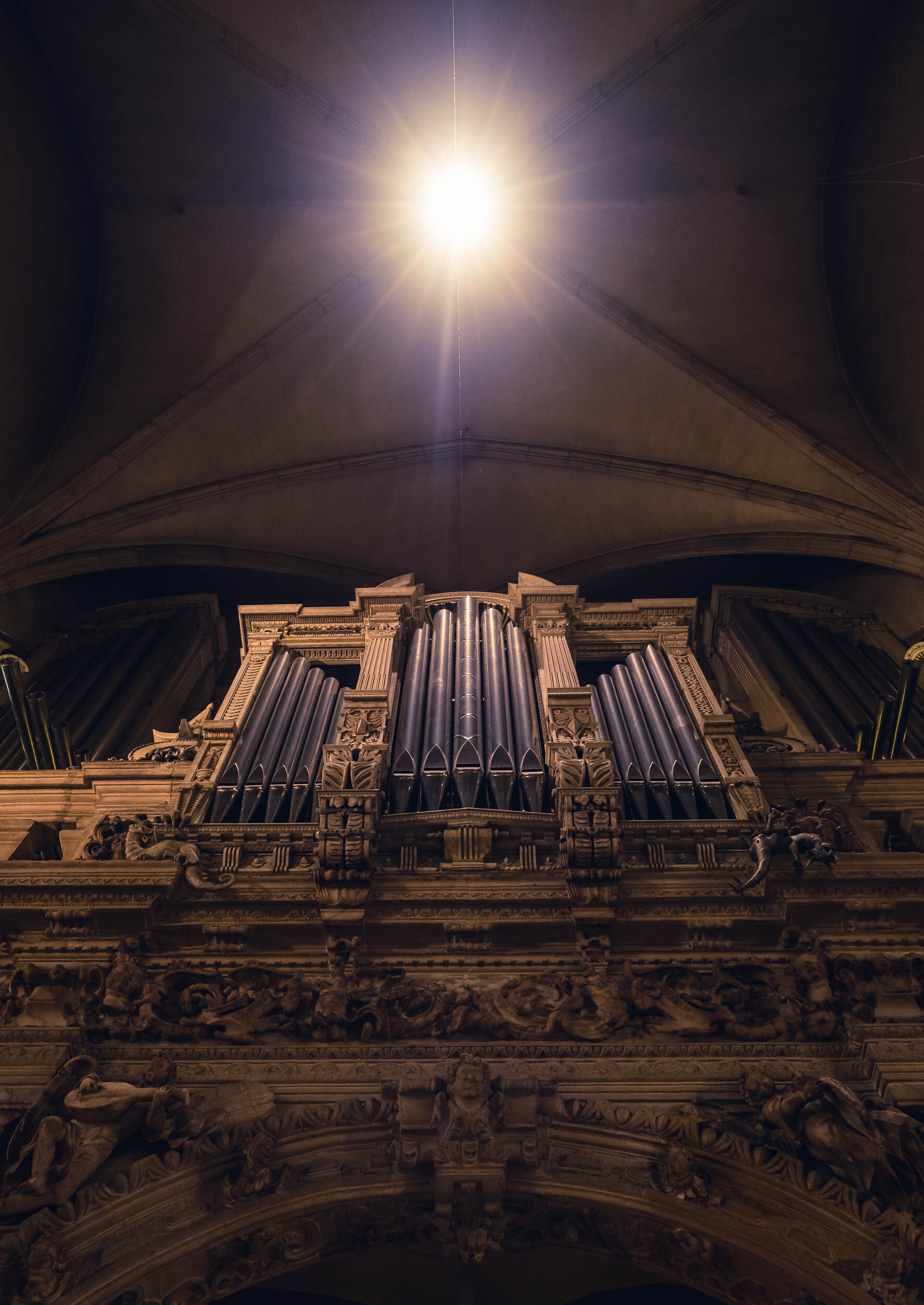
Pipes
One of my favourite instruments - this is the organ in the 17th century Notre Dame cathedral.

CBD
The Kirchberg district features the city's few skyscrapers, and several EU and other institutions.

Up
What goes up...

Down
... must come down again.

Modernity
This is one of the parts of the capital that feels distinctly modern - that is not the say the rest of the city didn't seem well maintained.

Philharmonie Luxembourg
Designed by Christian de Portzamparc, opened in 2005.

Contrasts
In many ways, one of the most fascinating aspects of the city is how elegantly it fused its medieval history with a modern cityscape, without overpowering it. Here's the Grand Duke Jean Museum of Modern Art with Musée Draï Eechelen in front.

Gold
The Court of Justice of the European Union is housed here.
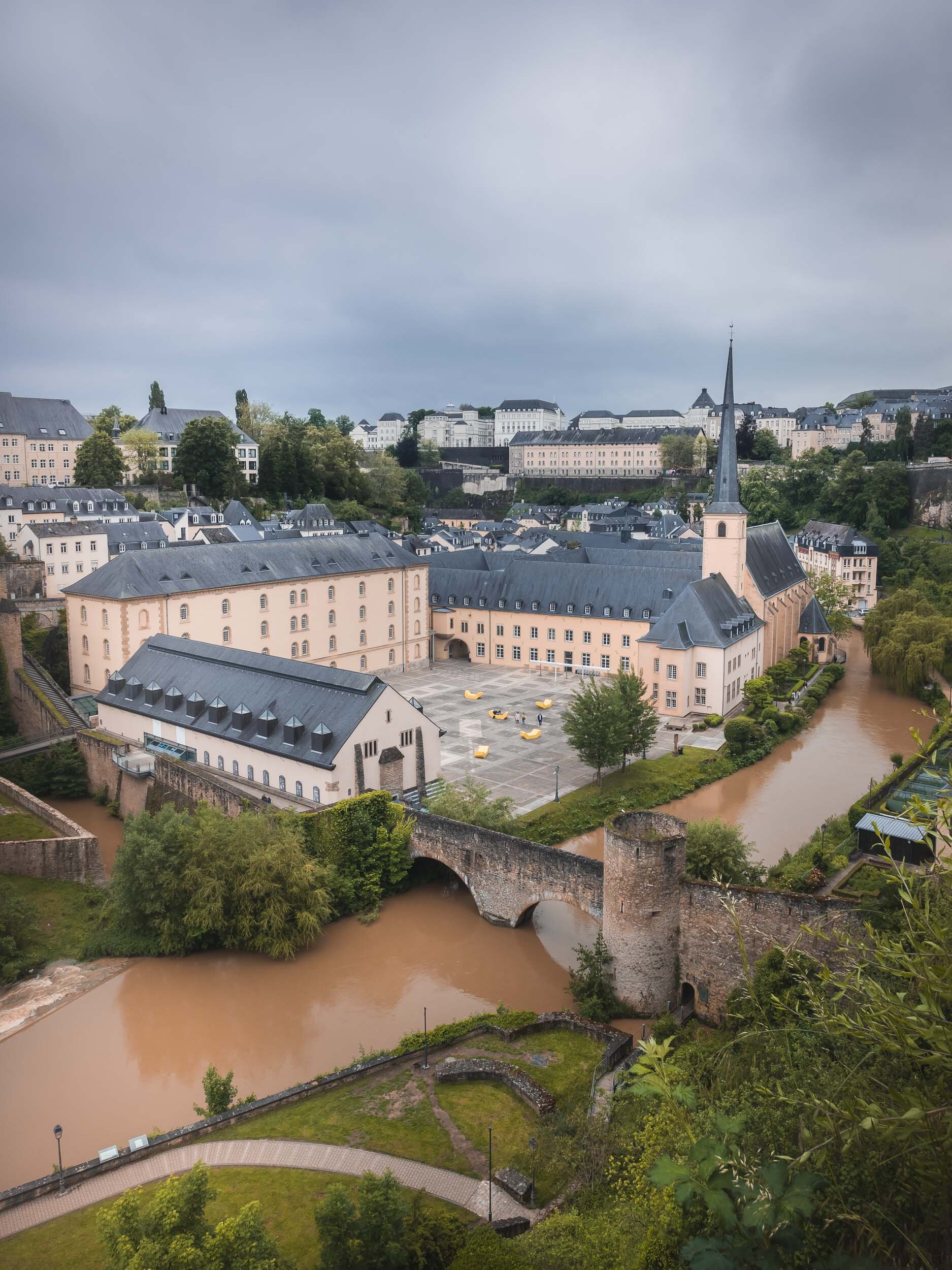
Church of Saint John
The Church of Saint John in Grund lies directly on the Alzette, and opposite the 11th cenury castle remains, around which the city settlement formed.
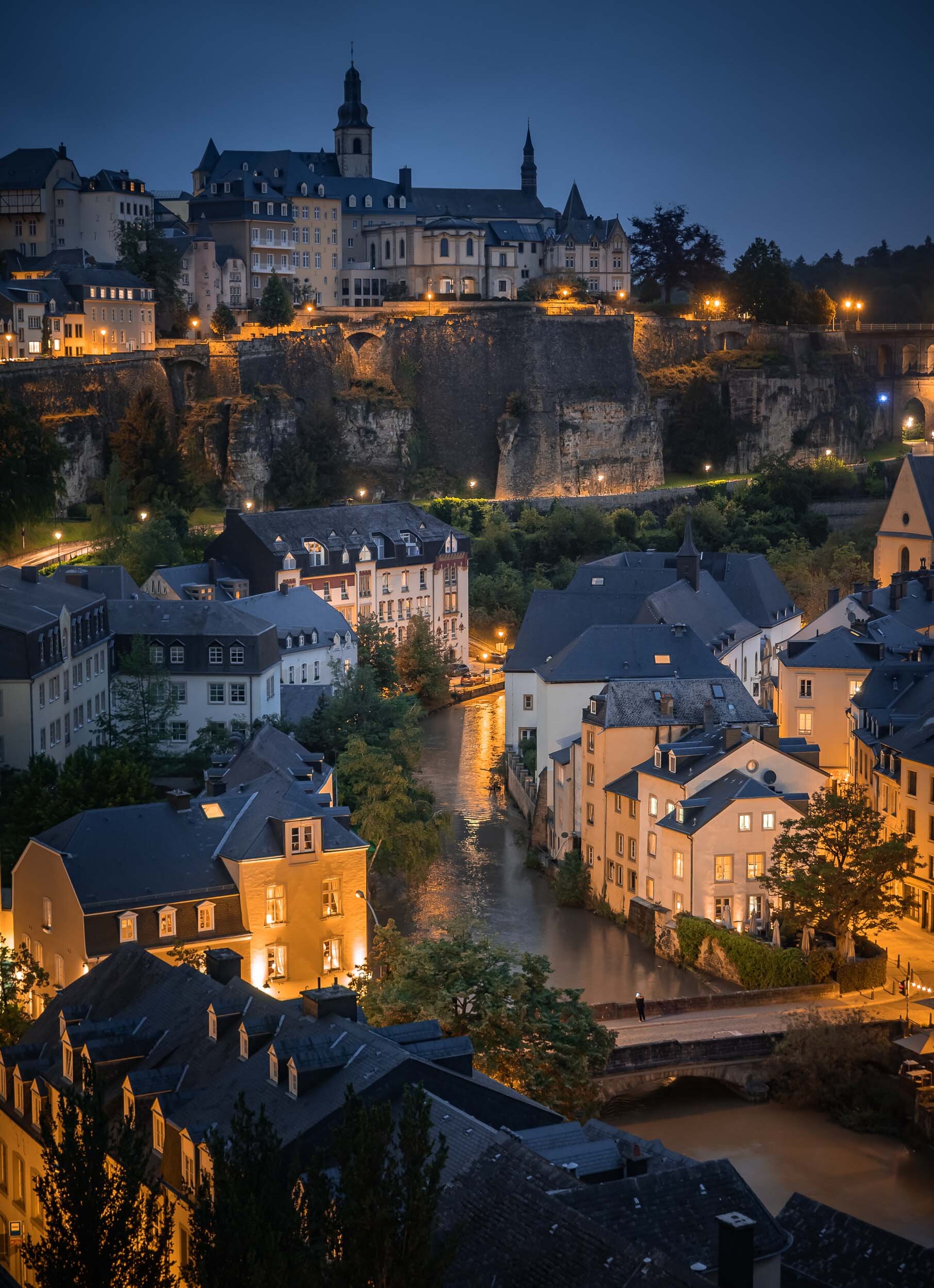
Evening Views
The late sunsets meant it took until 10pm to get these blue hour shots of the cityscape along the Alzette.
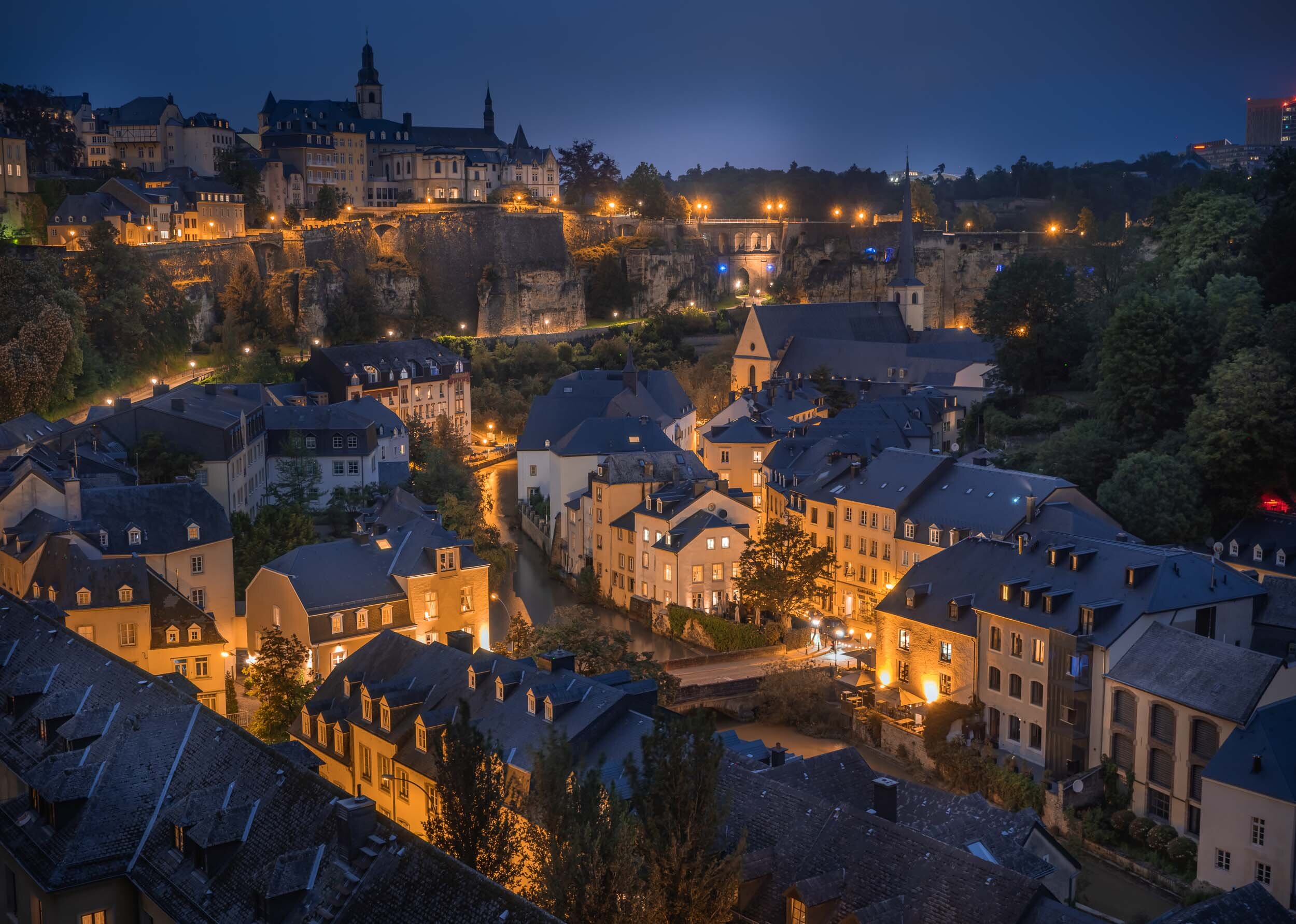
Nightfall over Luxembourg
It was worth the wait, and the extra 3km walk until we found the spot.
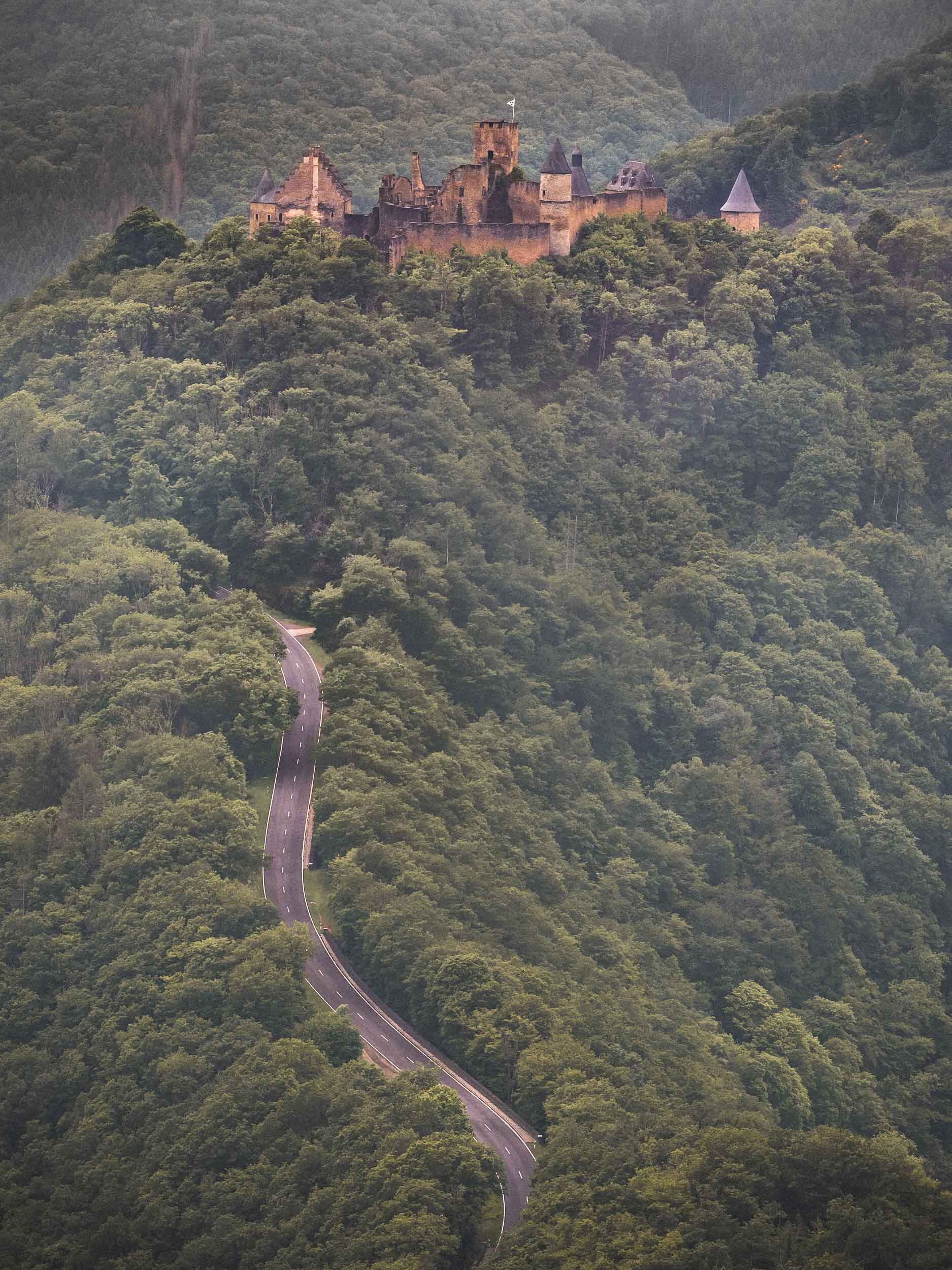
Bourscheid Castle
The last day had two more castles on the agenda. This is Bourscheid castle, some 150 metres above the River Sûre.

Angles
There are three nice view points on the surrounding hills, all giving a slightly different impression of the castle.

1000 years
From a distance it looks well preserved, but up close and inside it's more obvious that it has lost a lot of its original medieval structure.
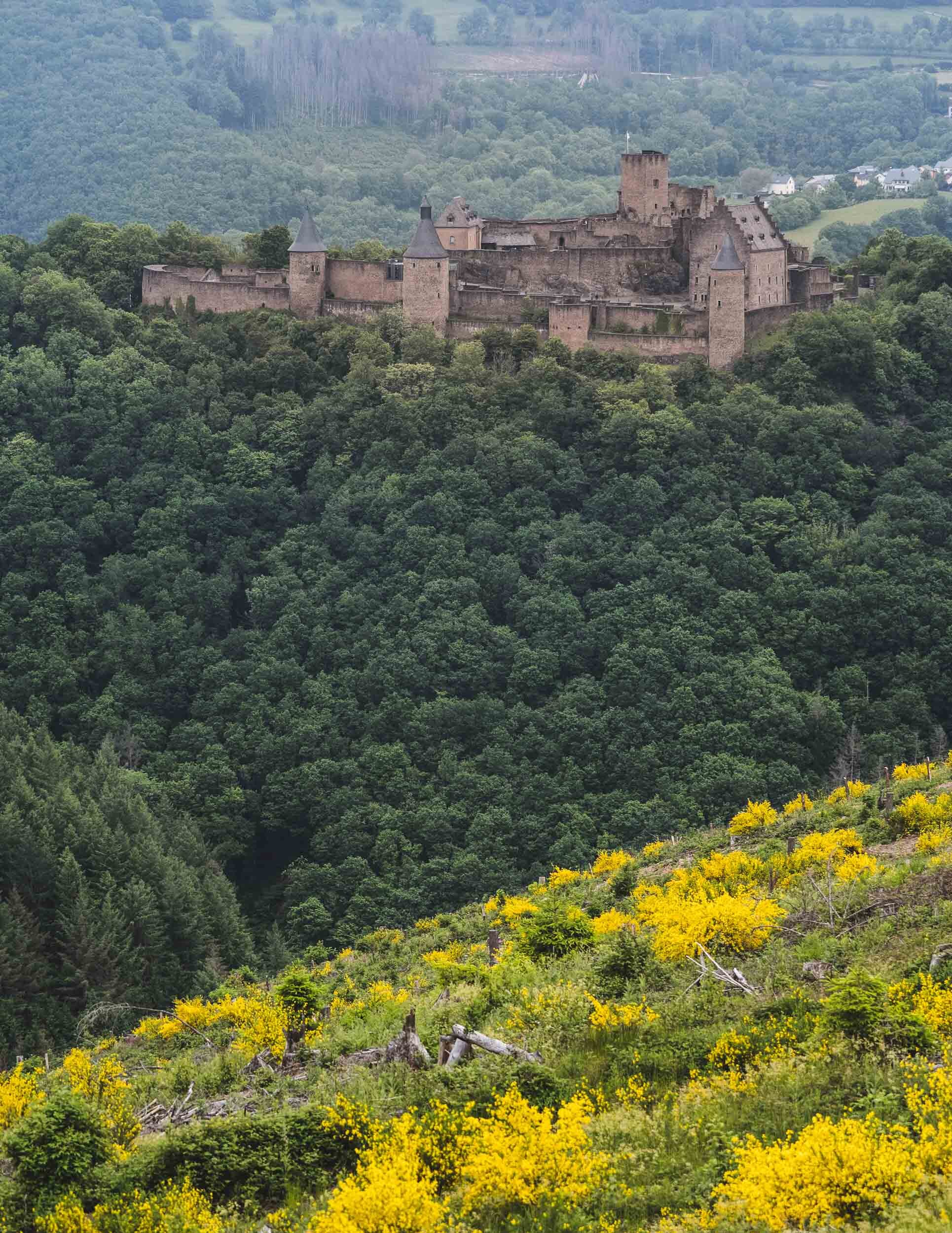
Yellow
The last viewpoint made for some beautiful contrasts with what I believe are rape seed flowers.

Lonely Trees
Can't resist those.
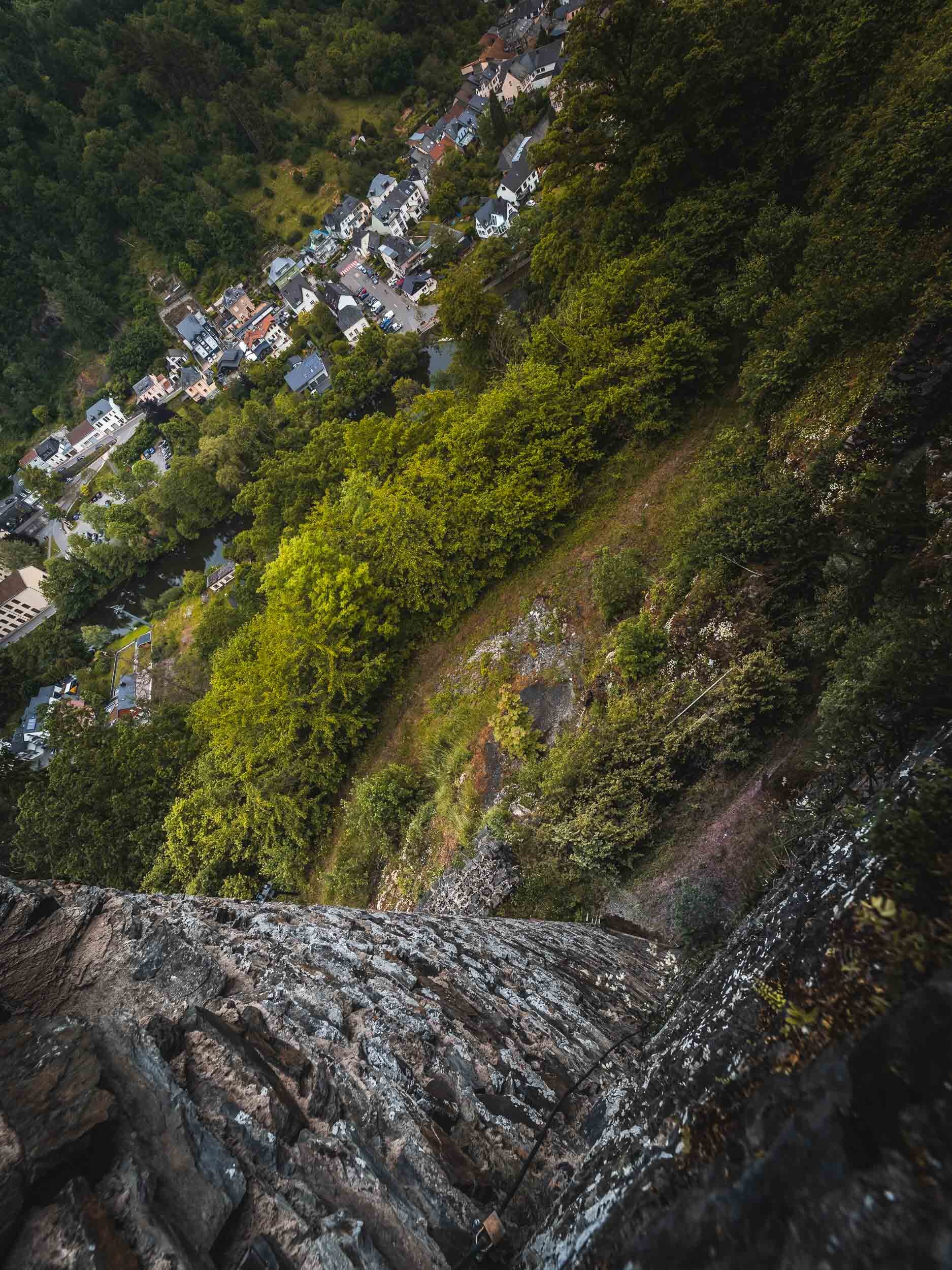
Perched High
It is situated over 300m above the city, which makes for some dramatic perspectives.

Castle No 4
And the last castle on the list was probably the most famous one - Vianden.
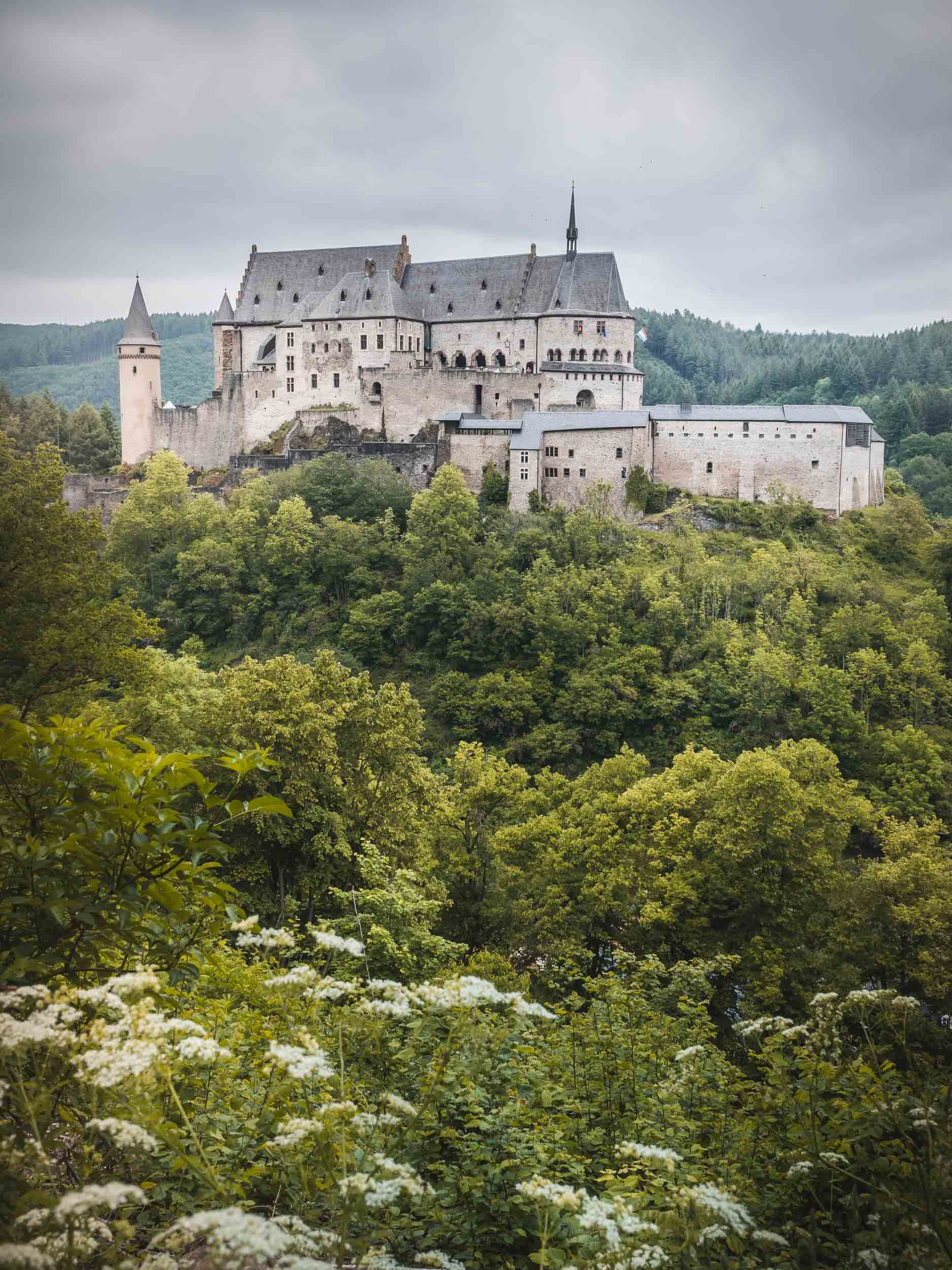
Transformations
The castle was built on the site of an ancient Roman castellum, and dates back almost a thousand years, although it has Gothic and Renaissance sections as well.
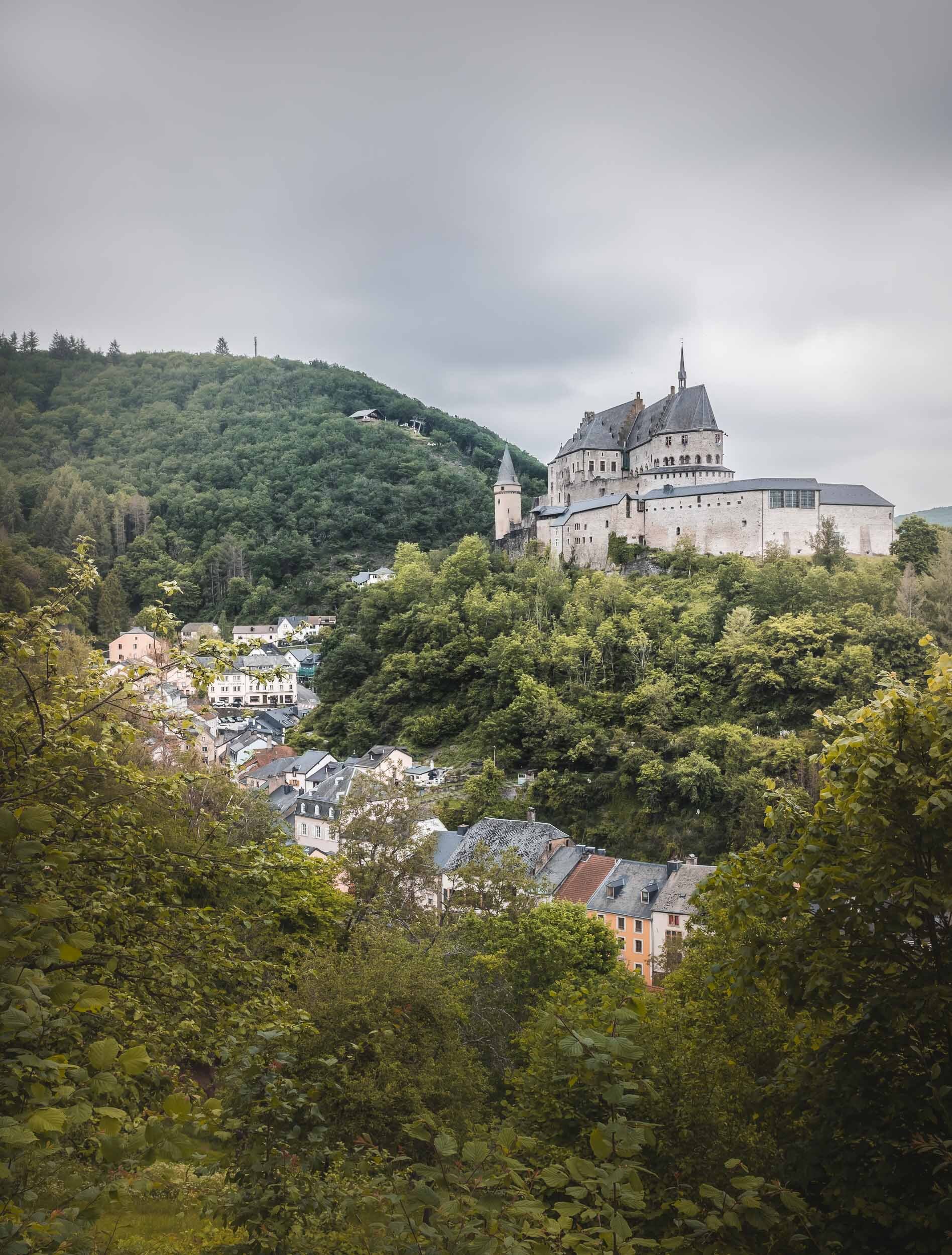
Modern Times
The castle played a military role in the second world war Battle of Vianden. It's final restoration was completed in 1990.
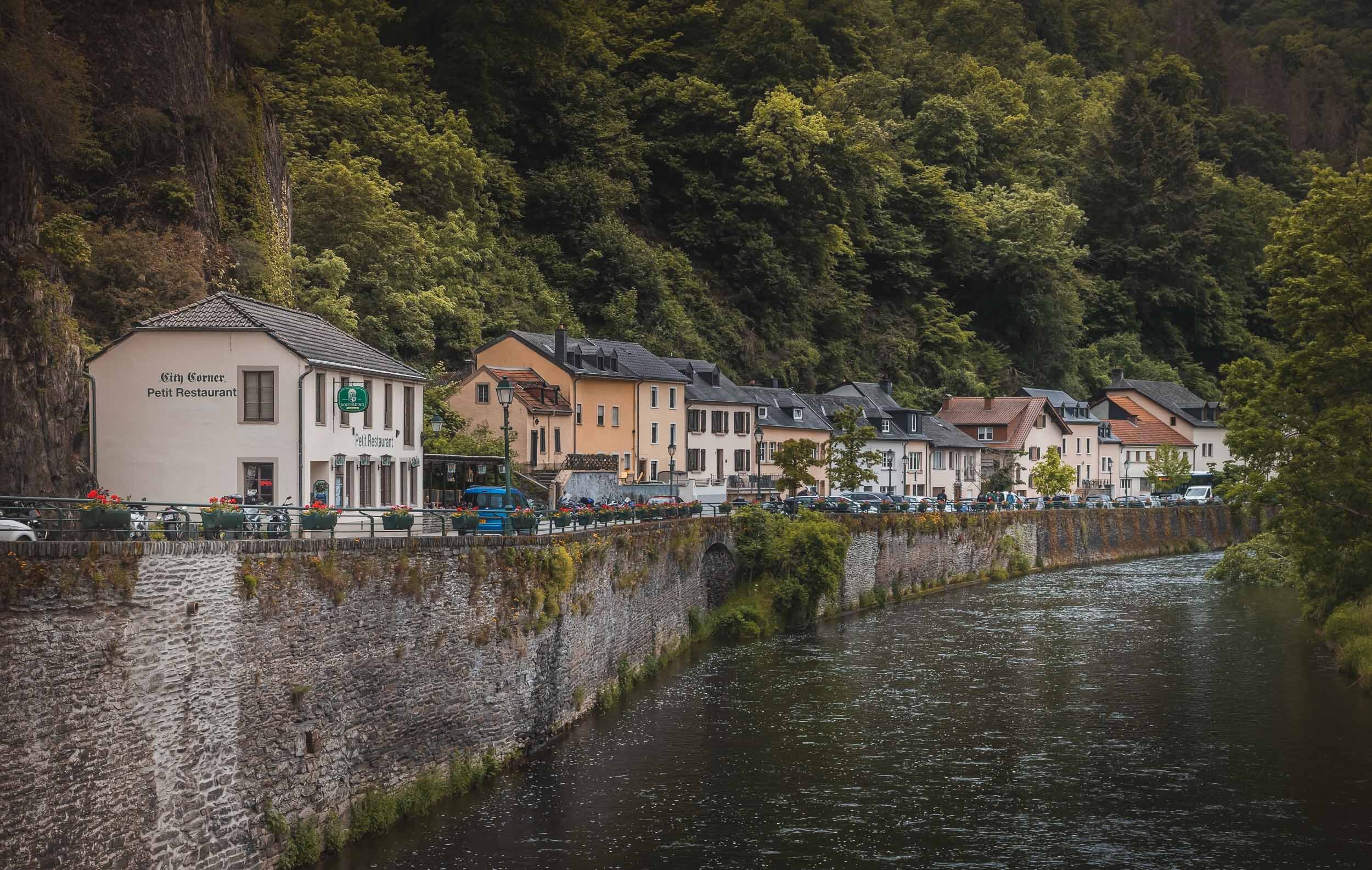
Vianden
The town of 1500 people lies on the Our river. It was our last station of the trip.